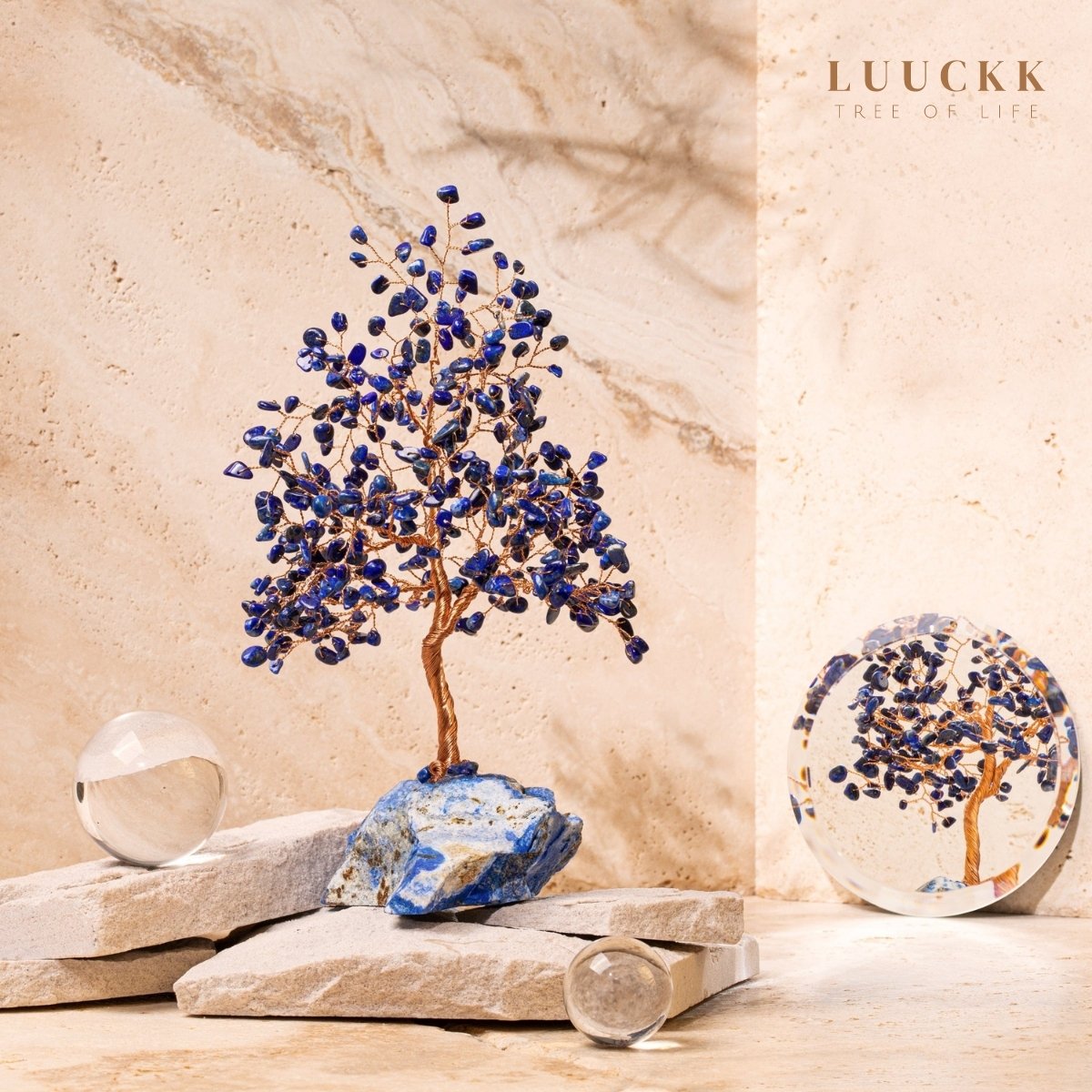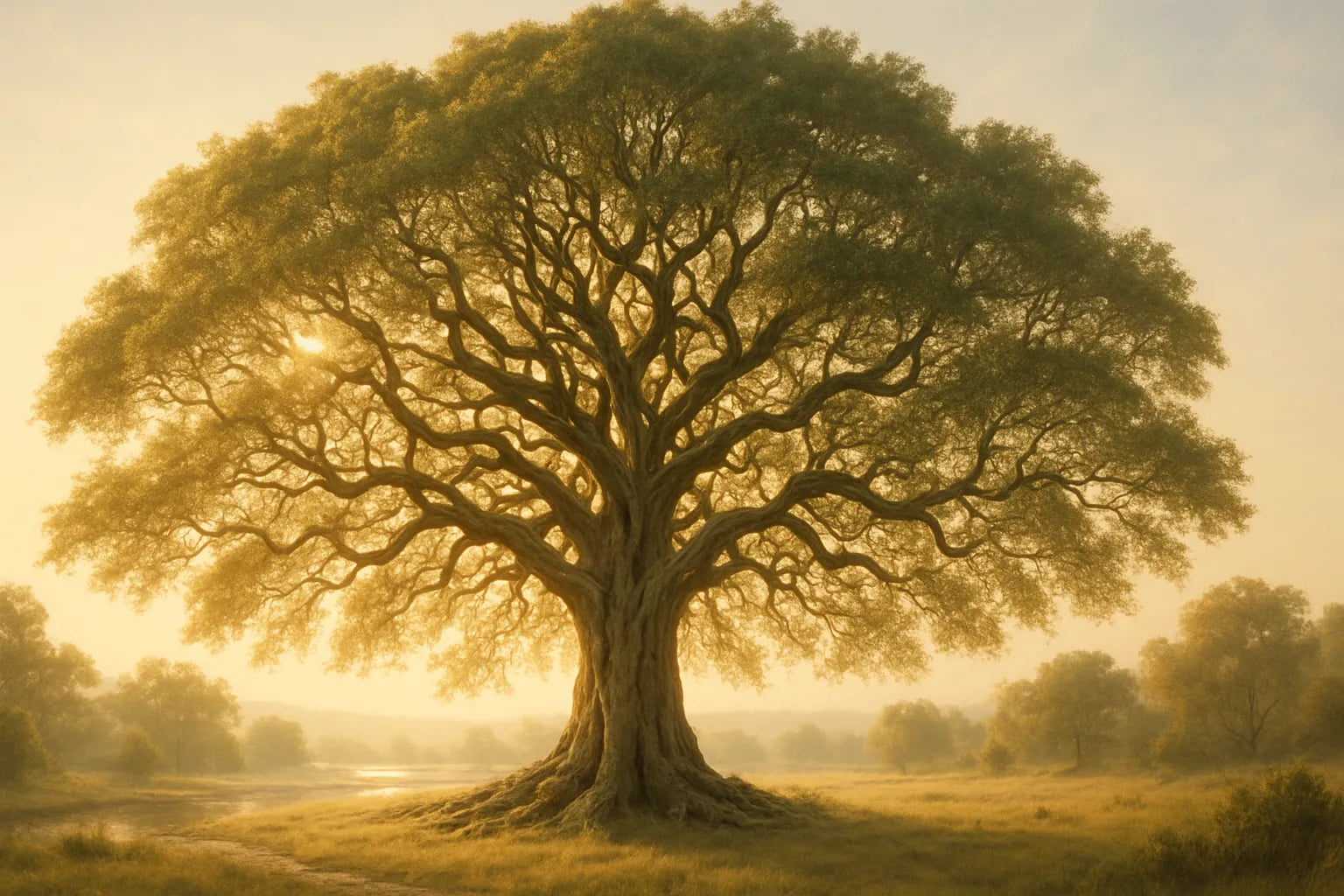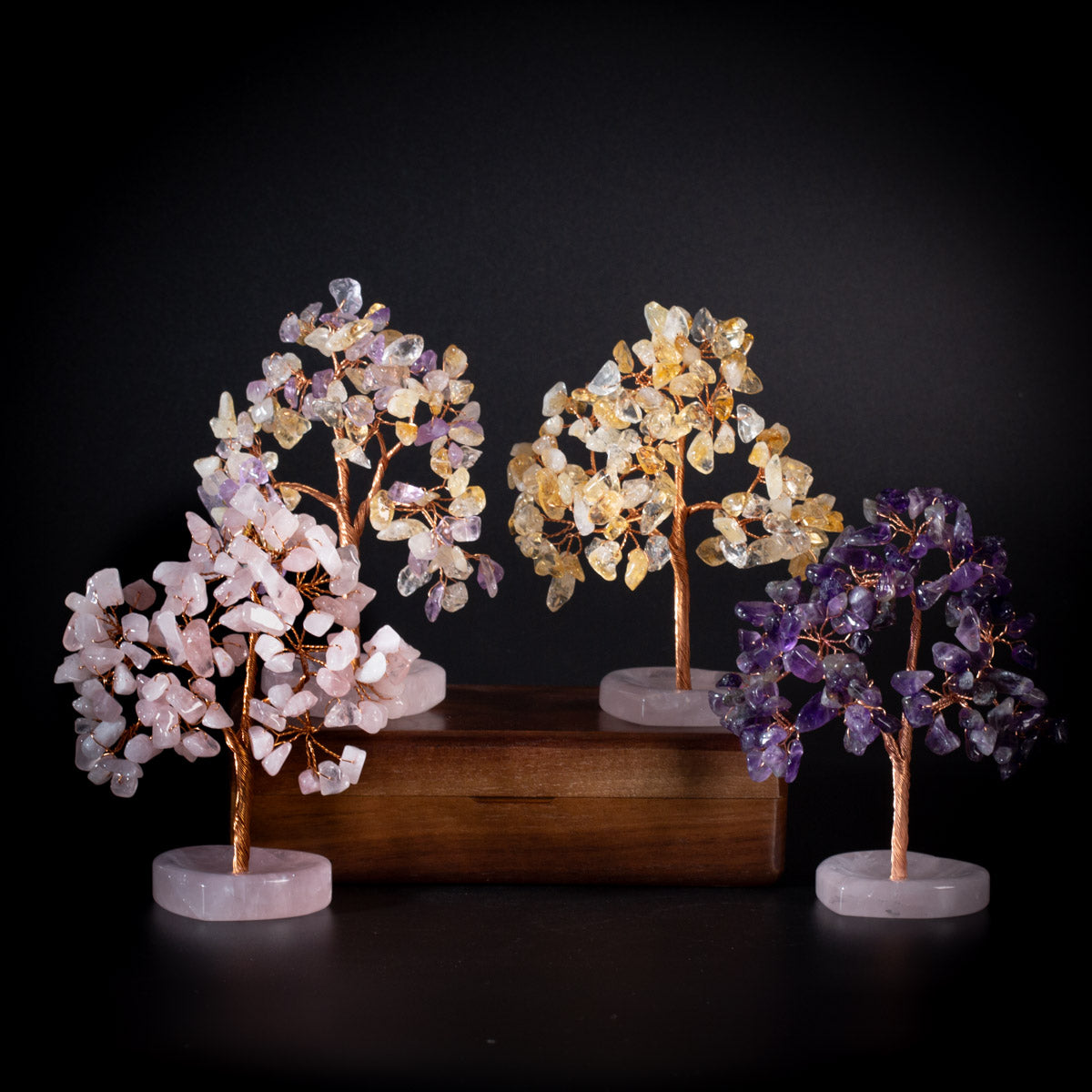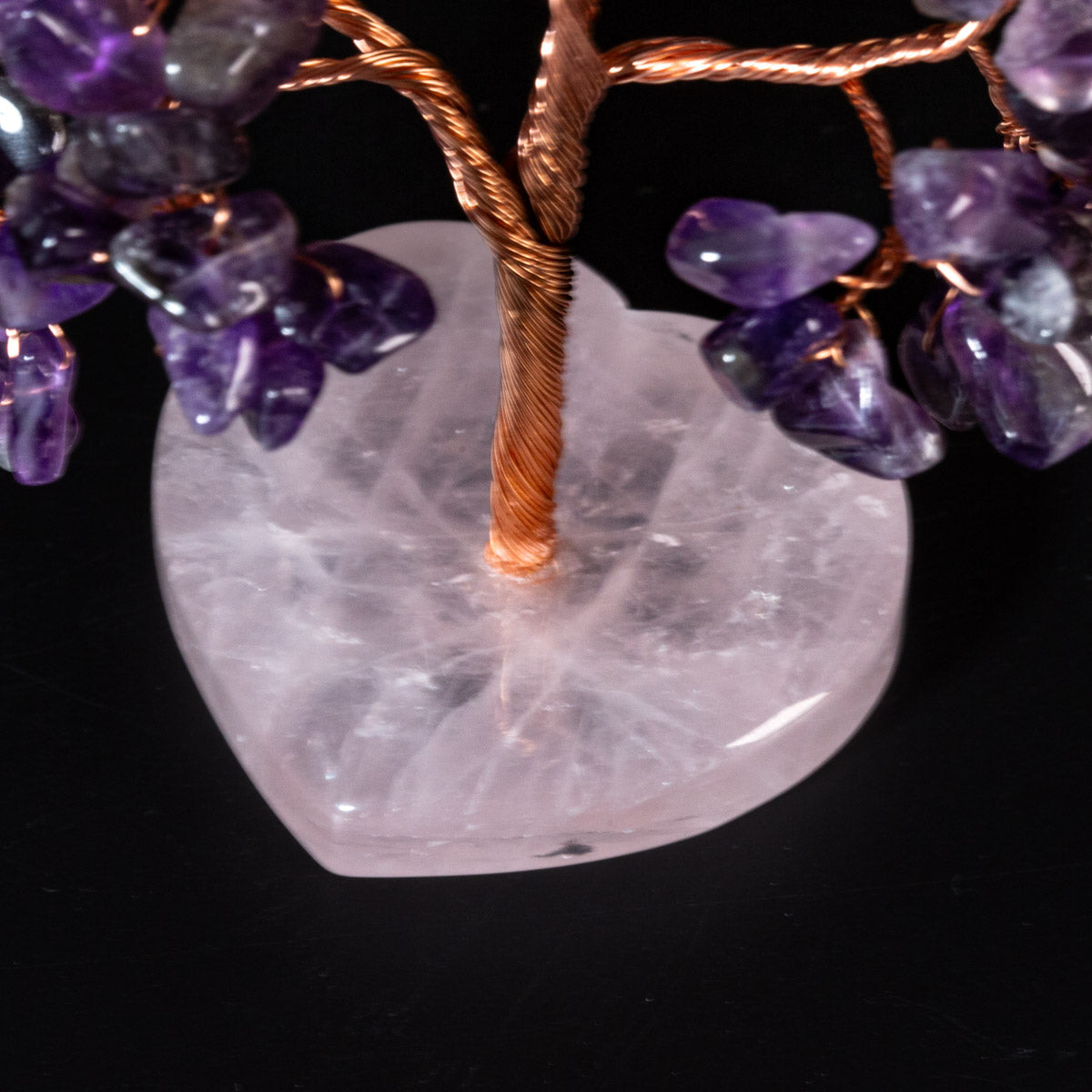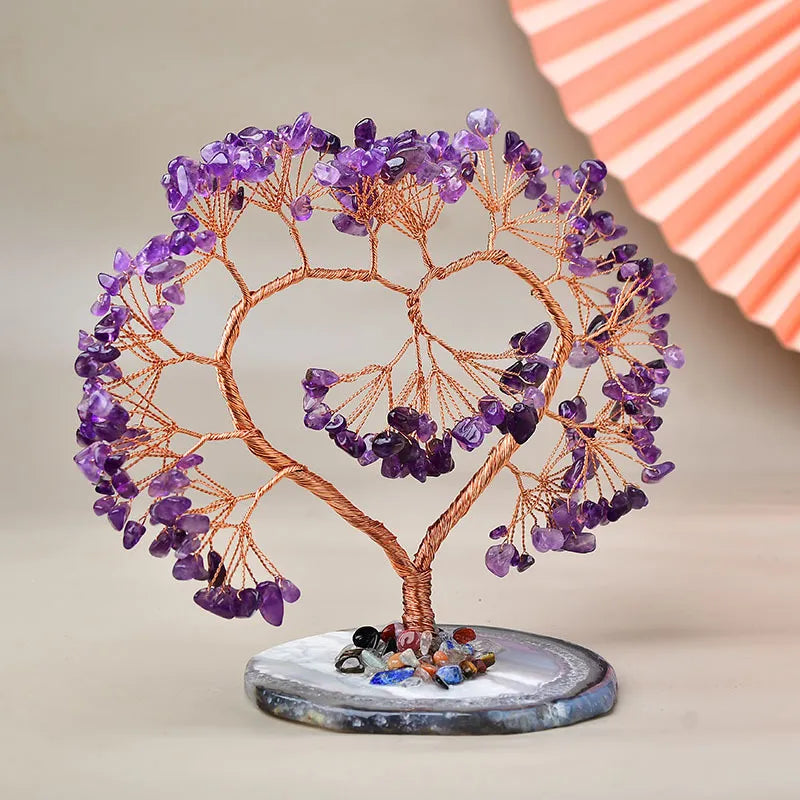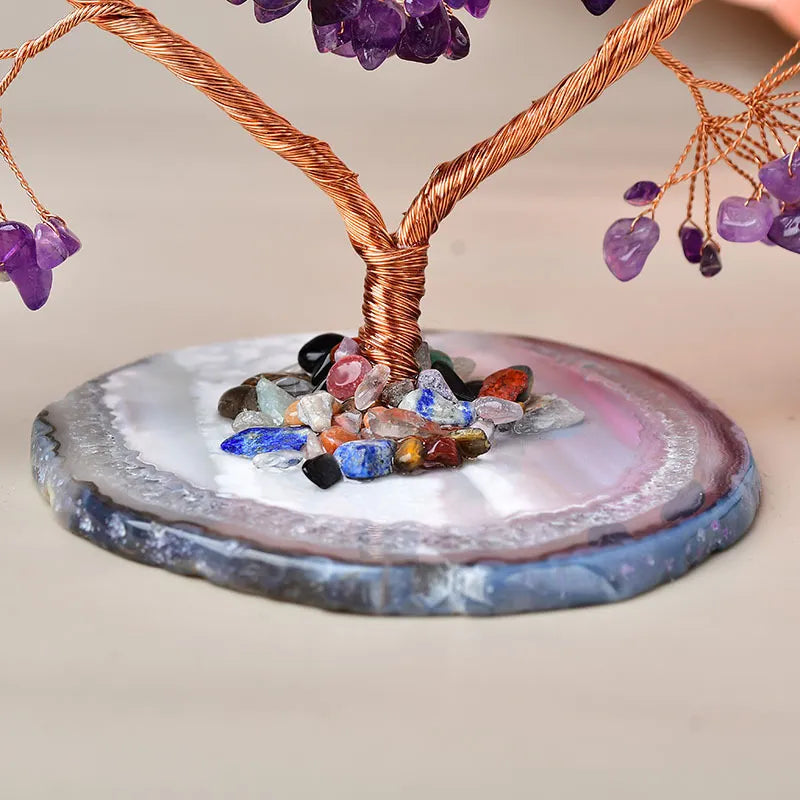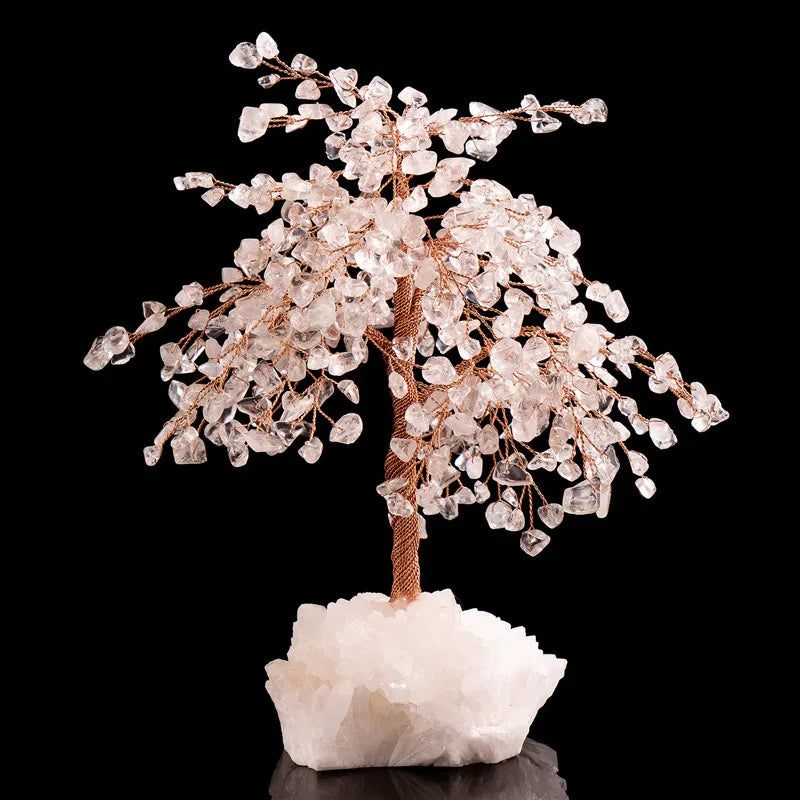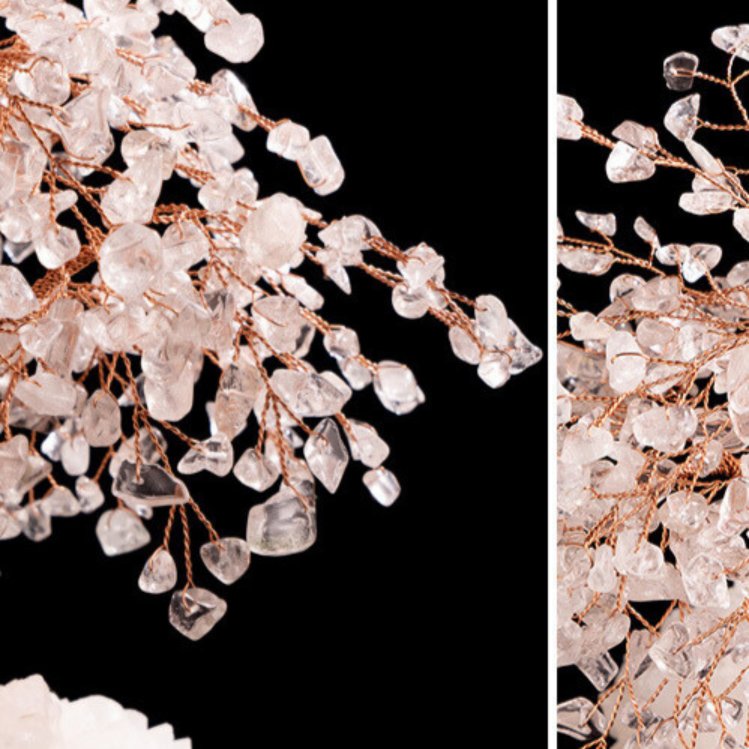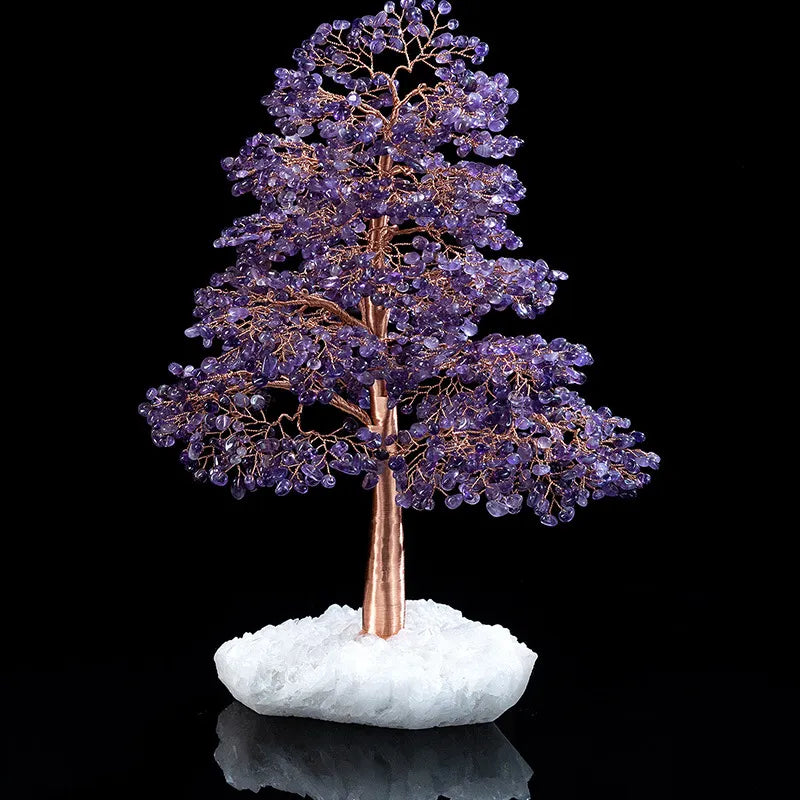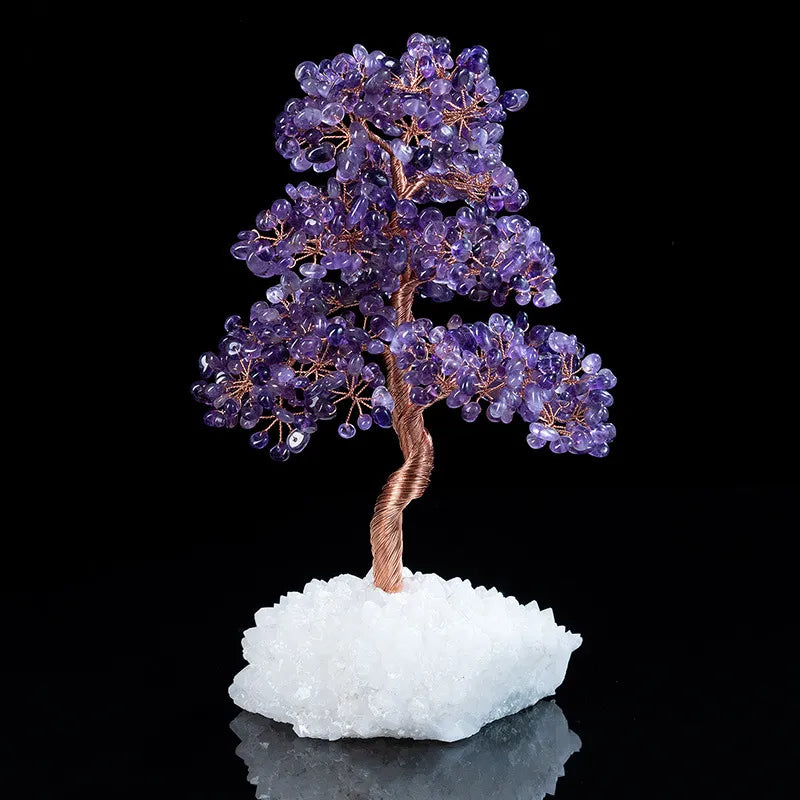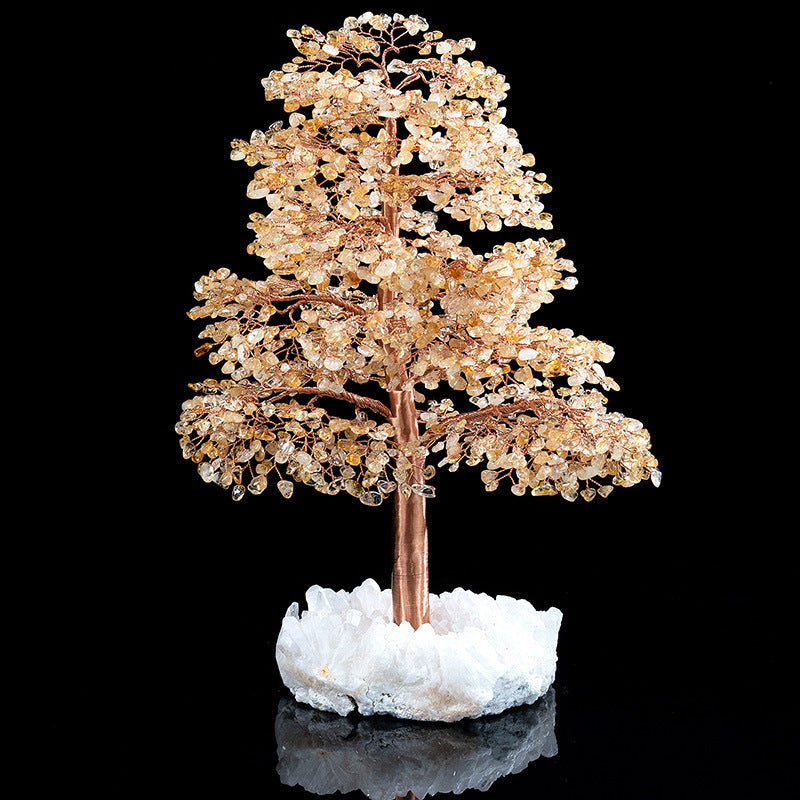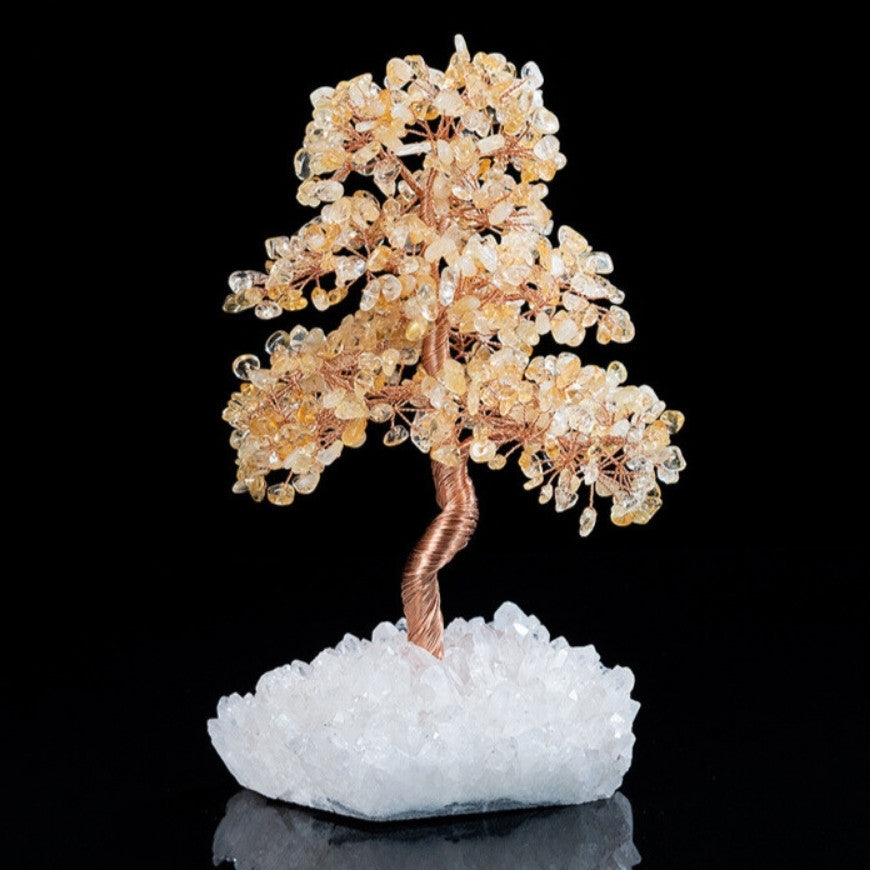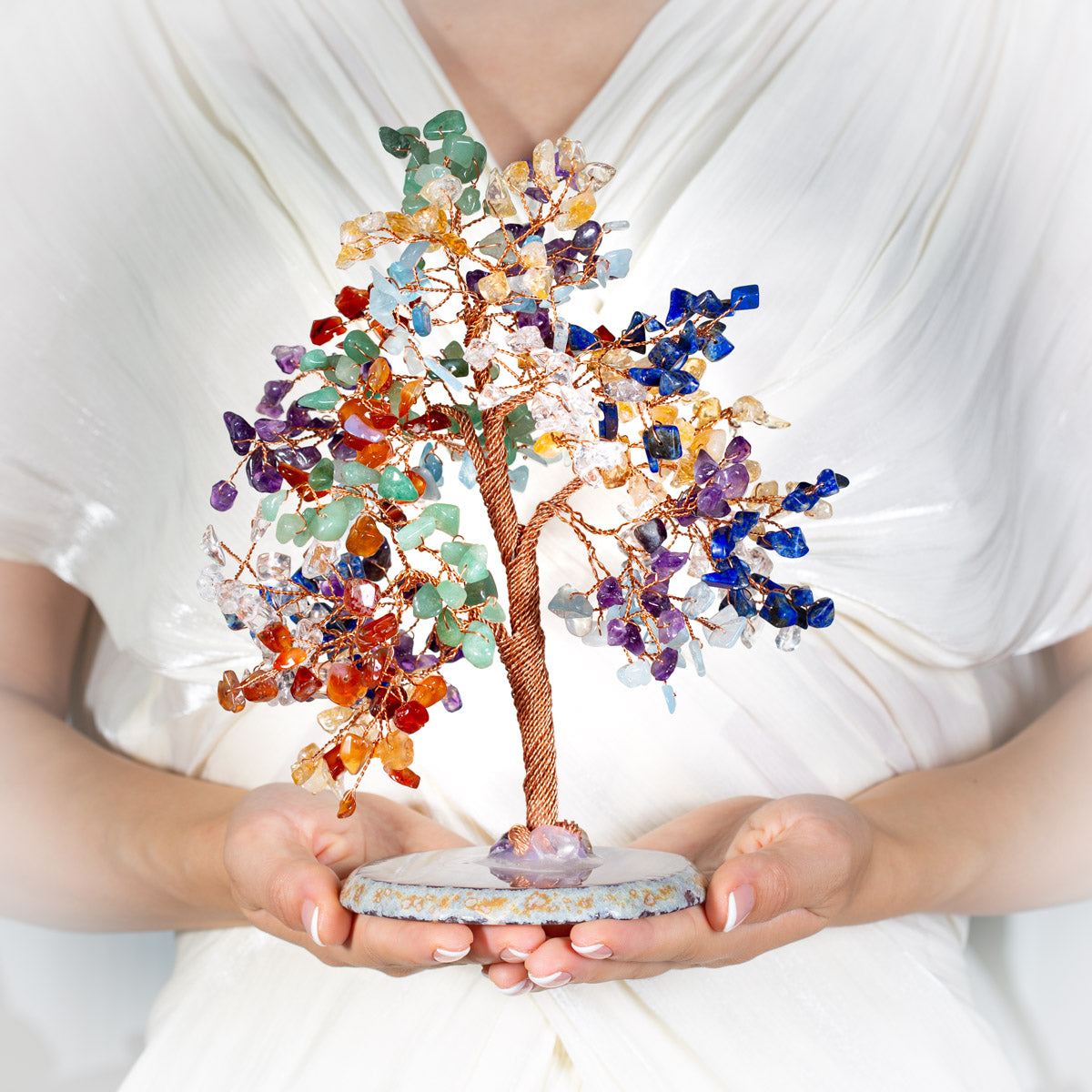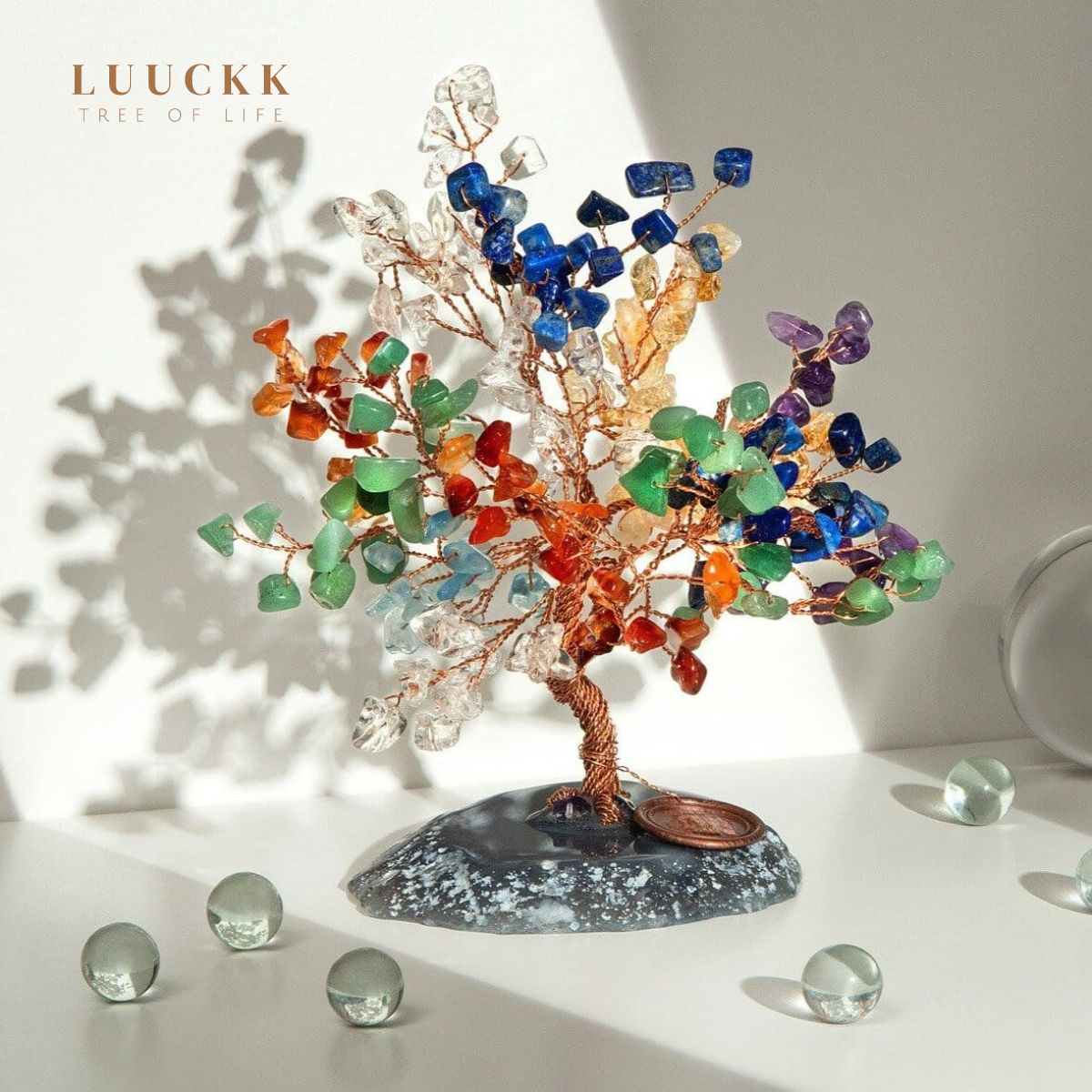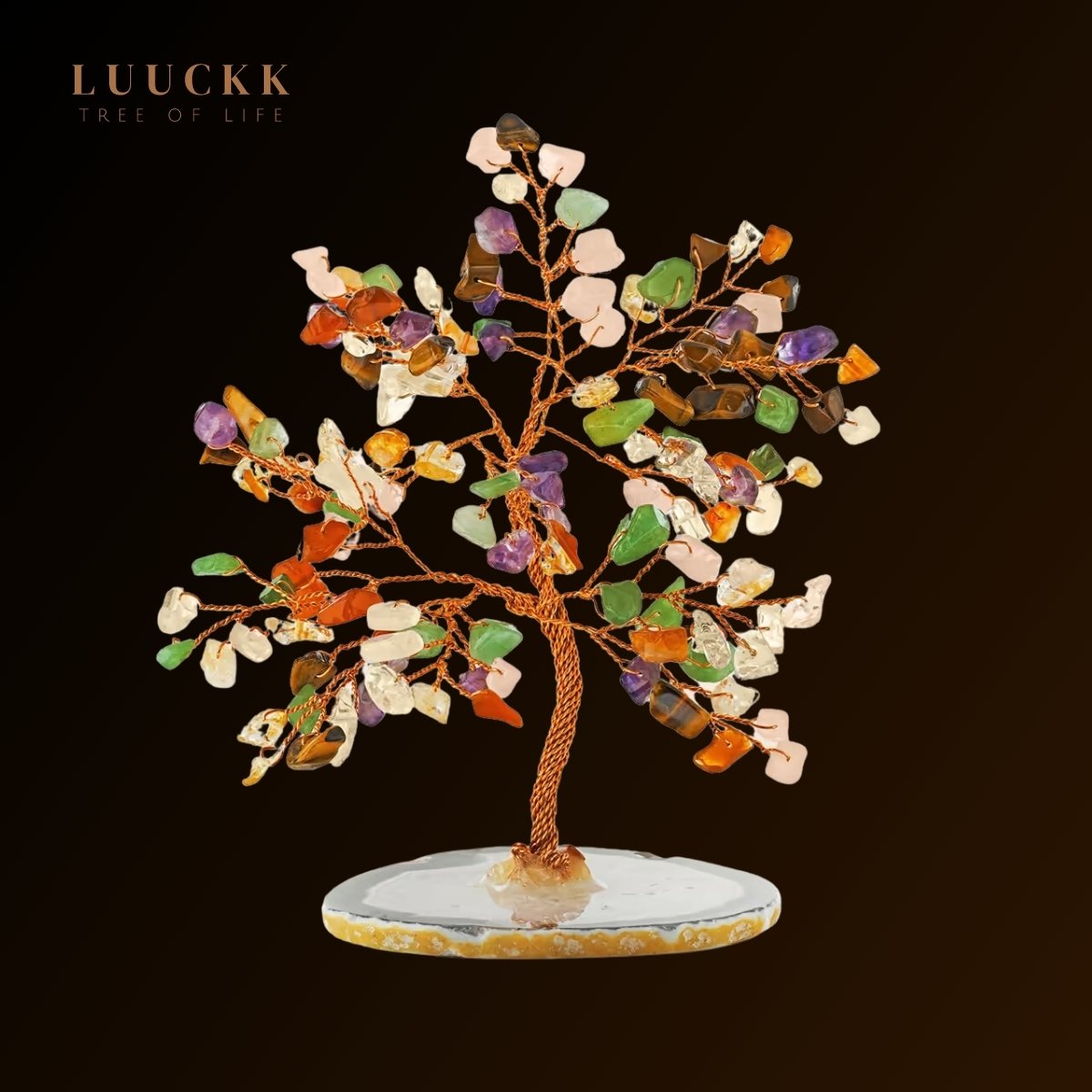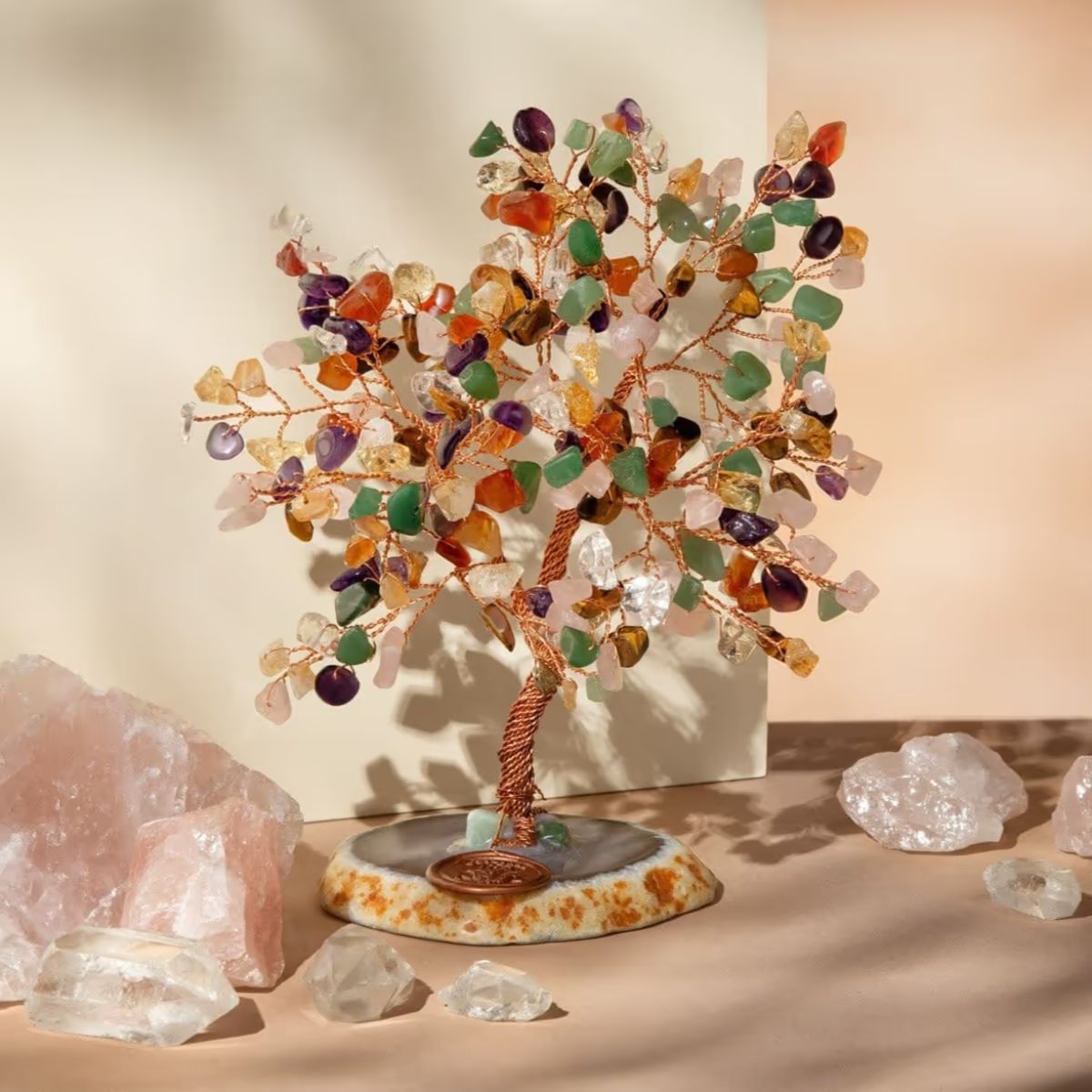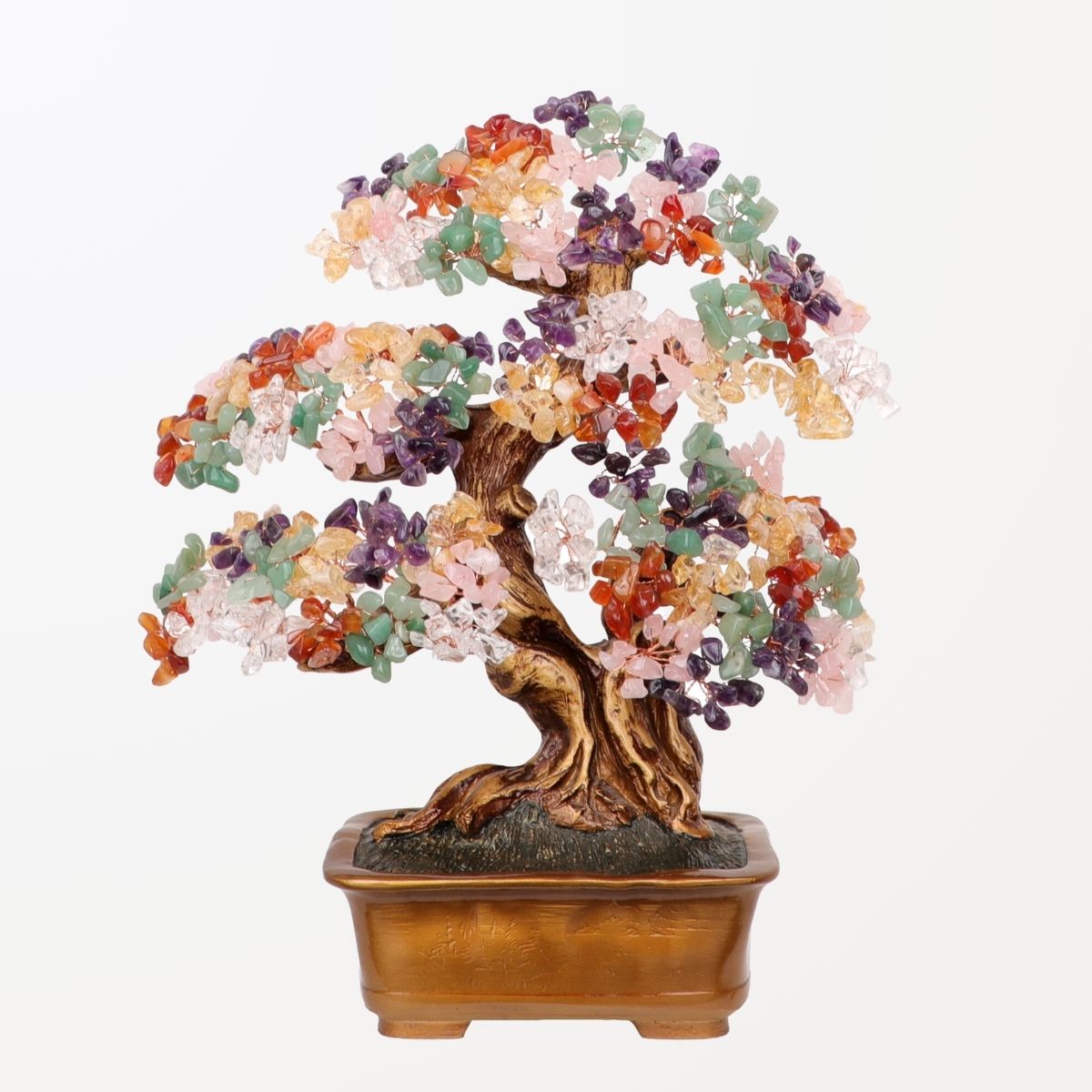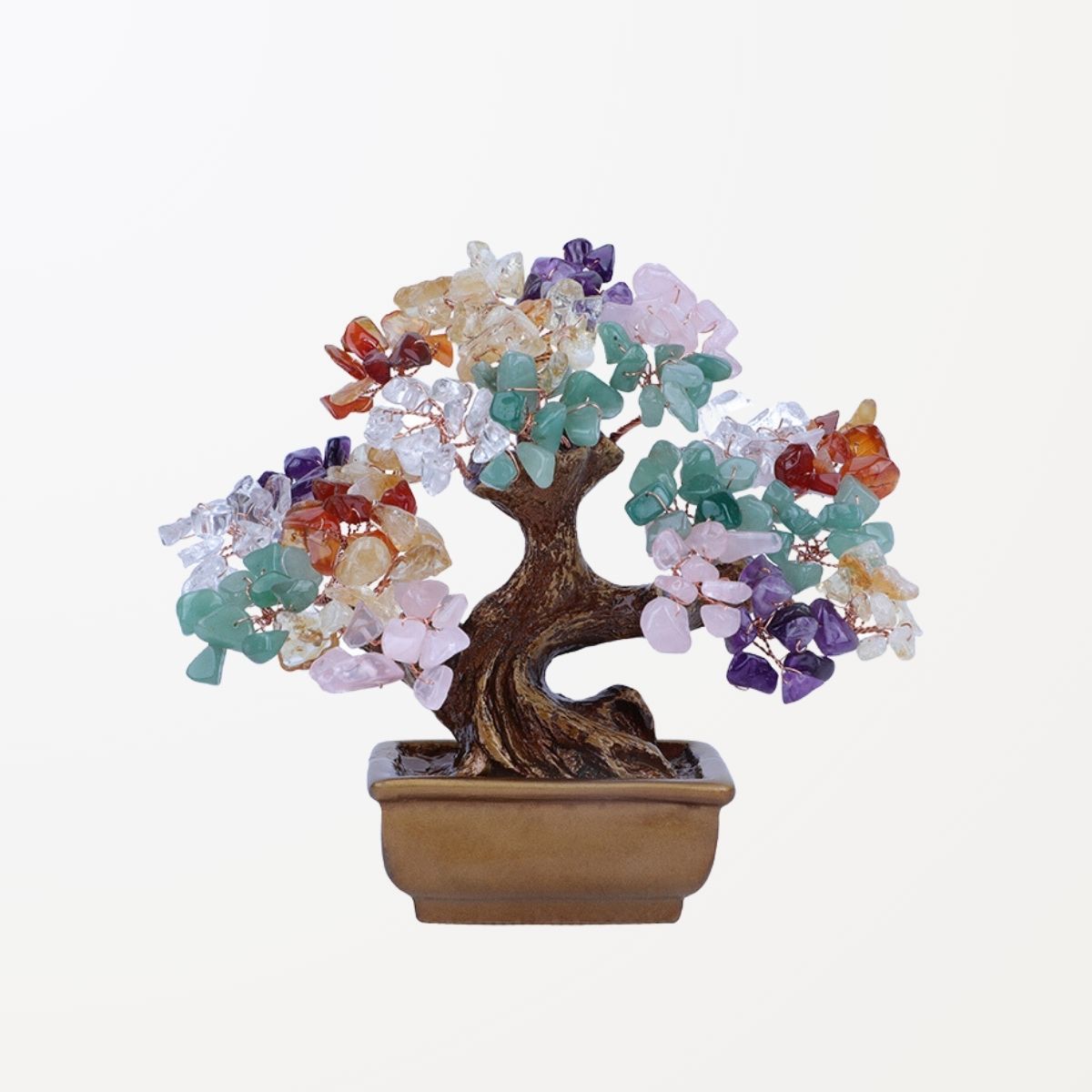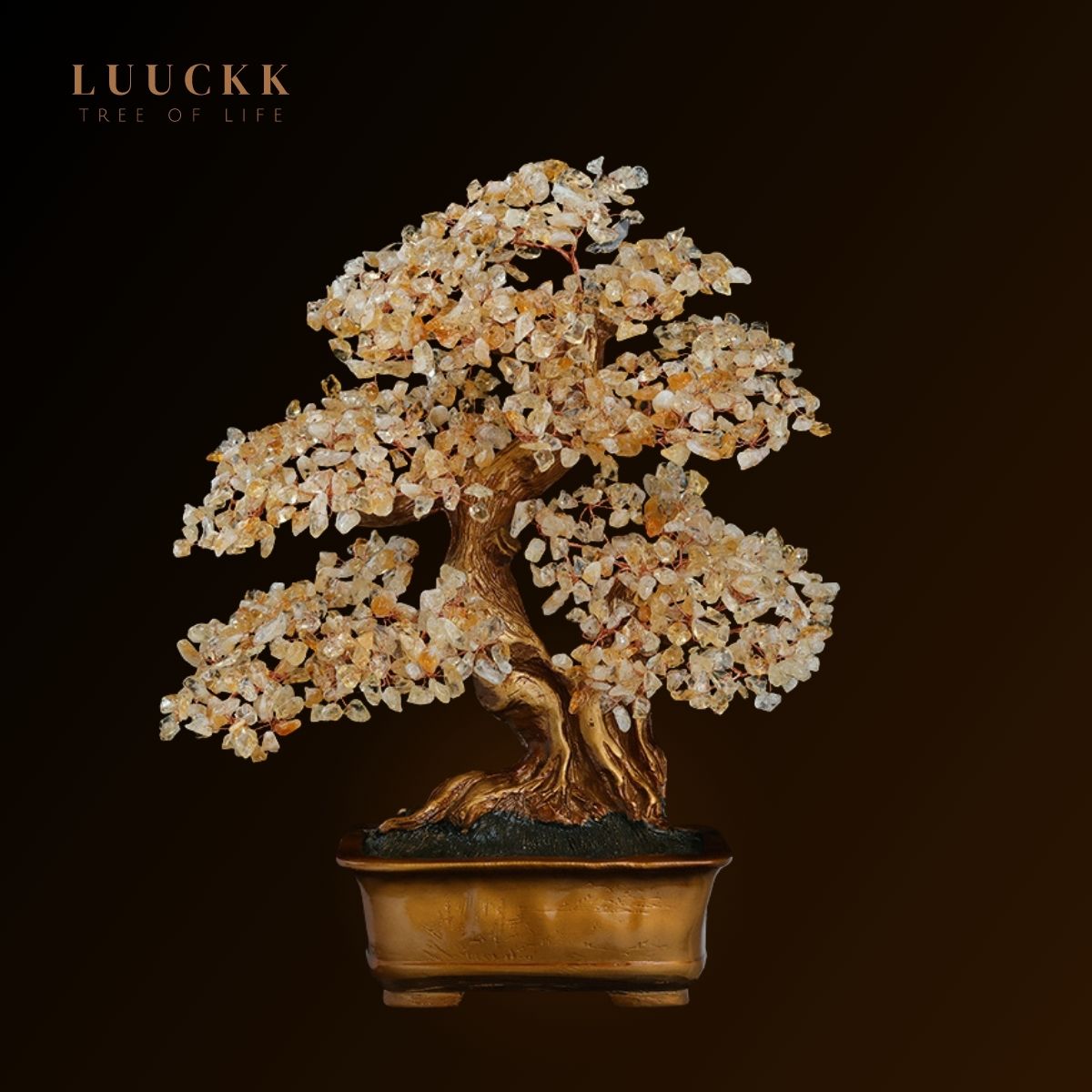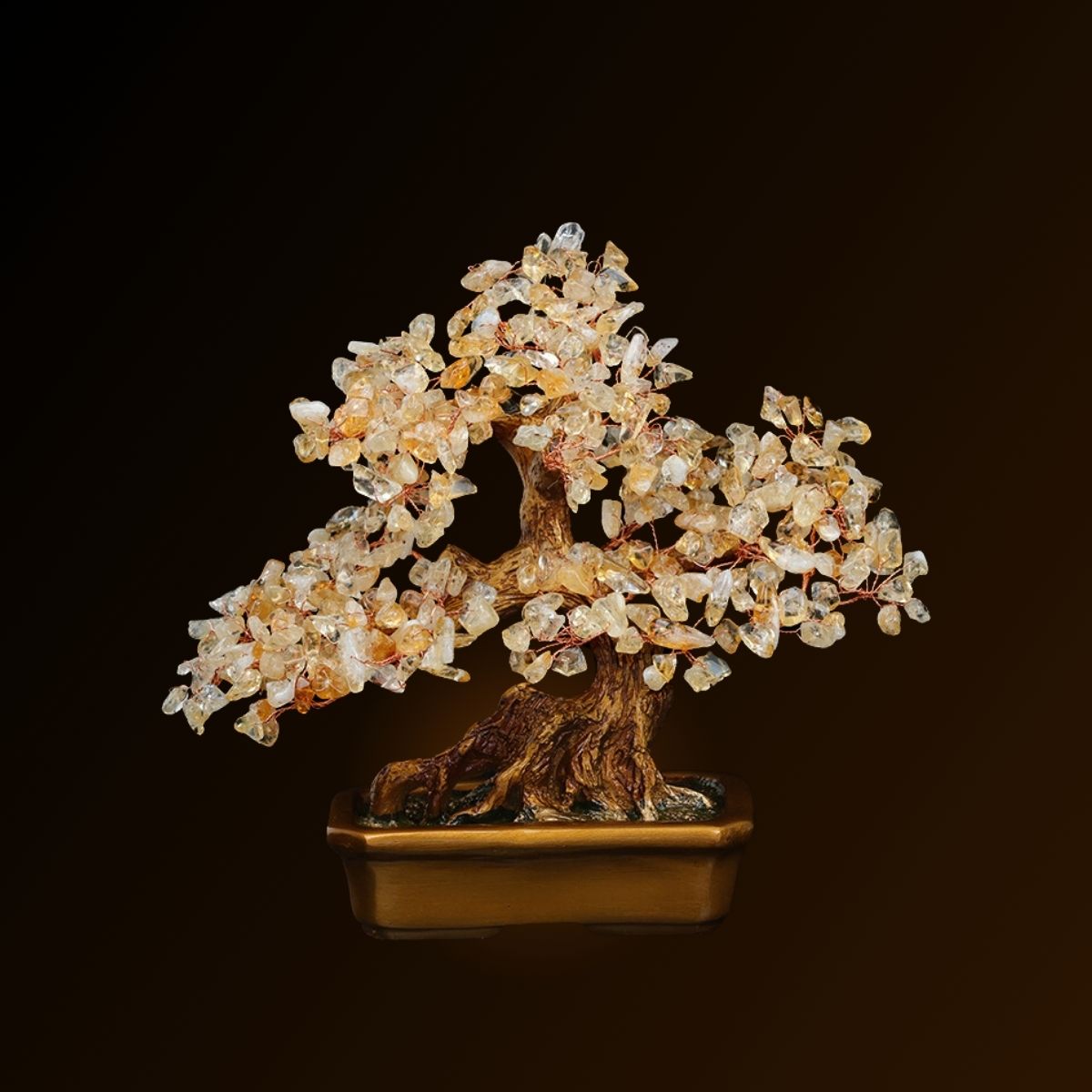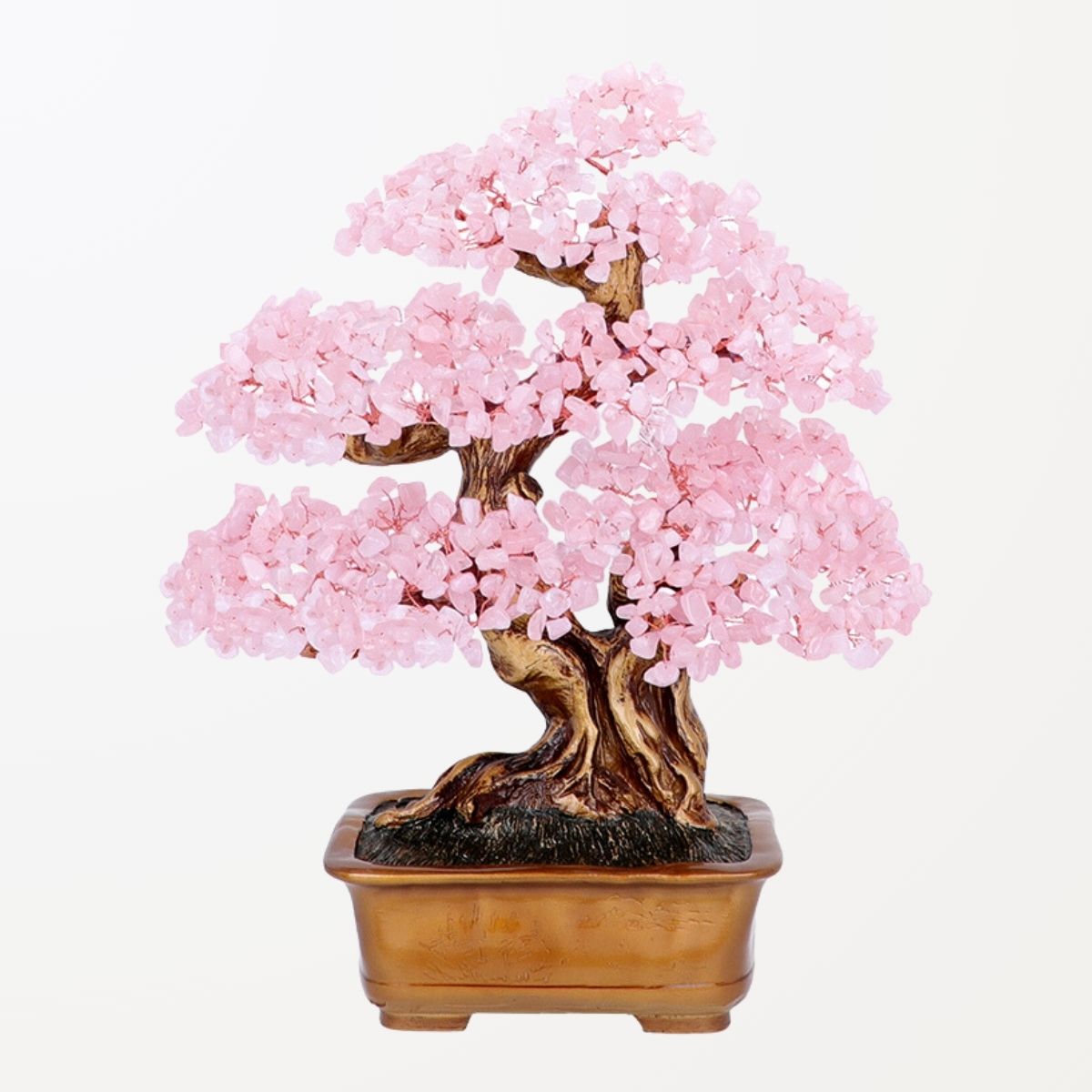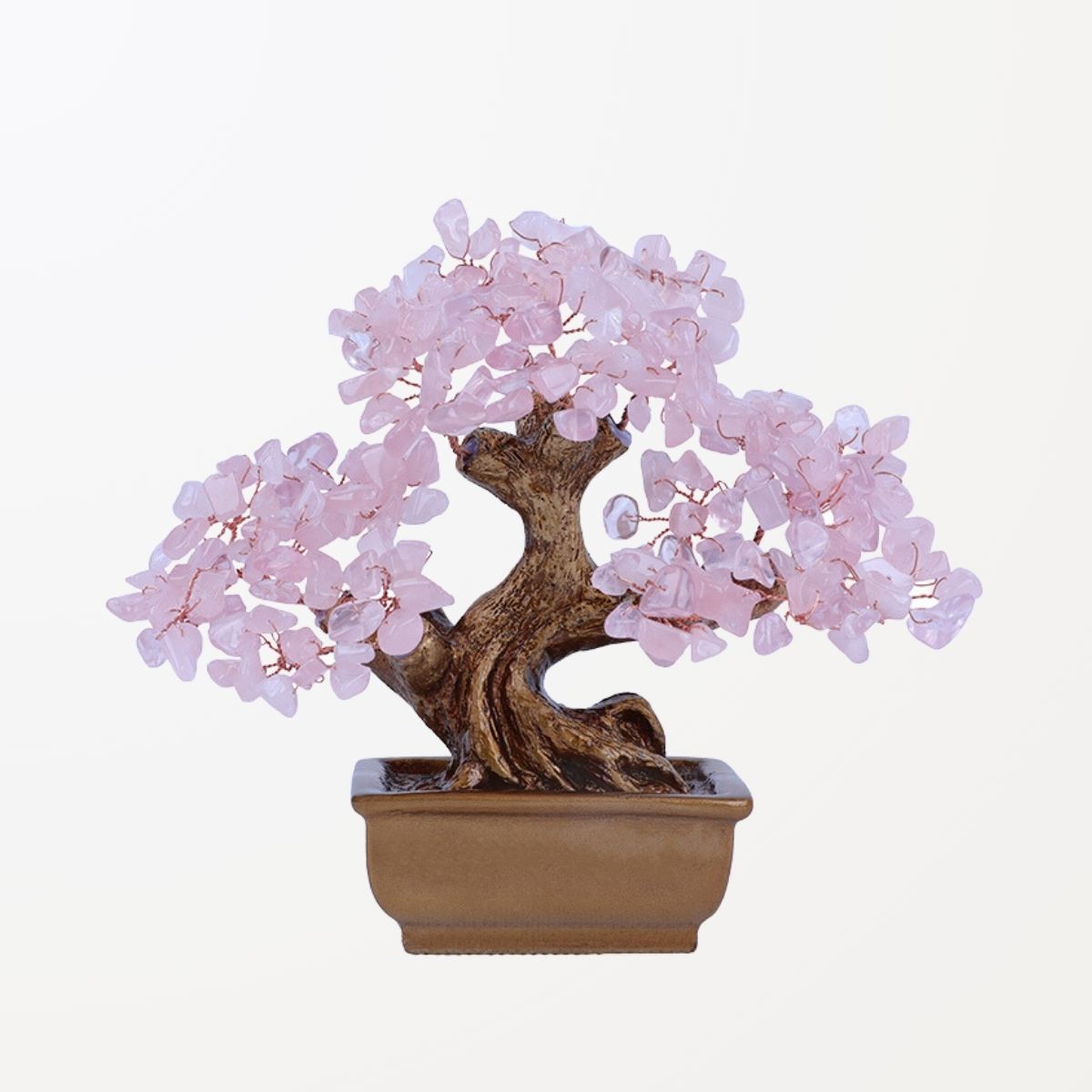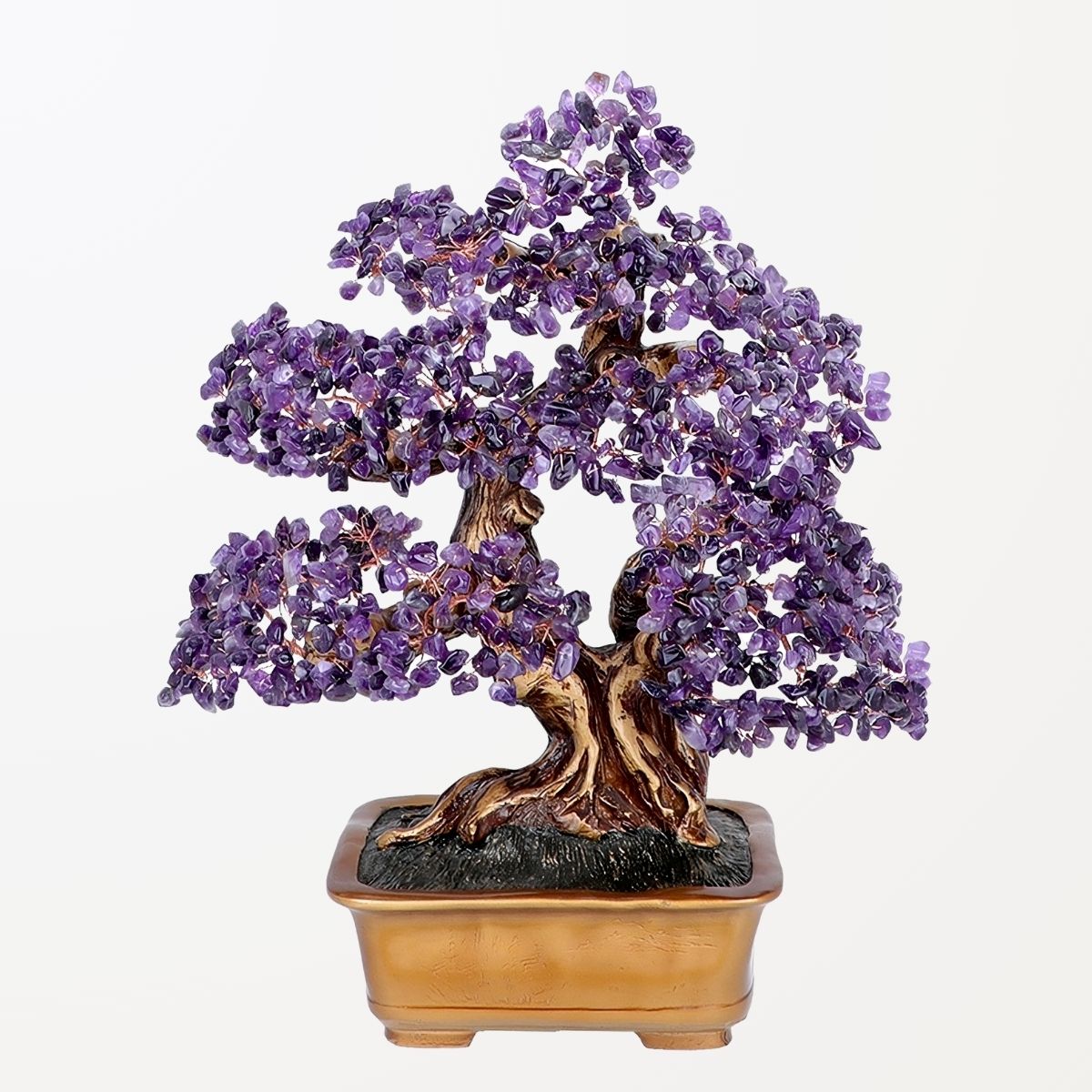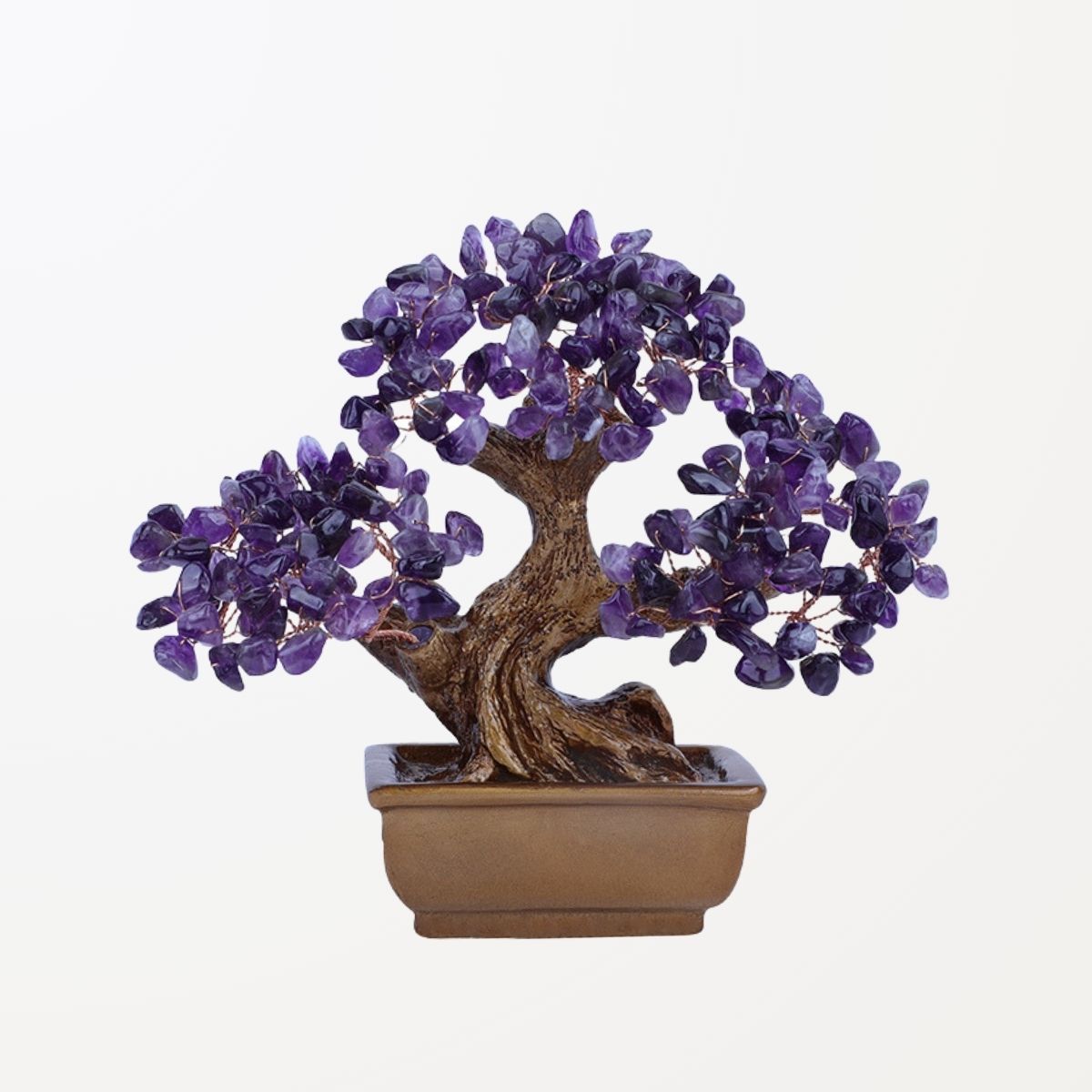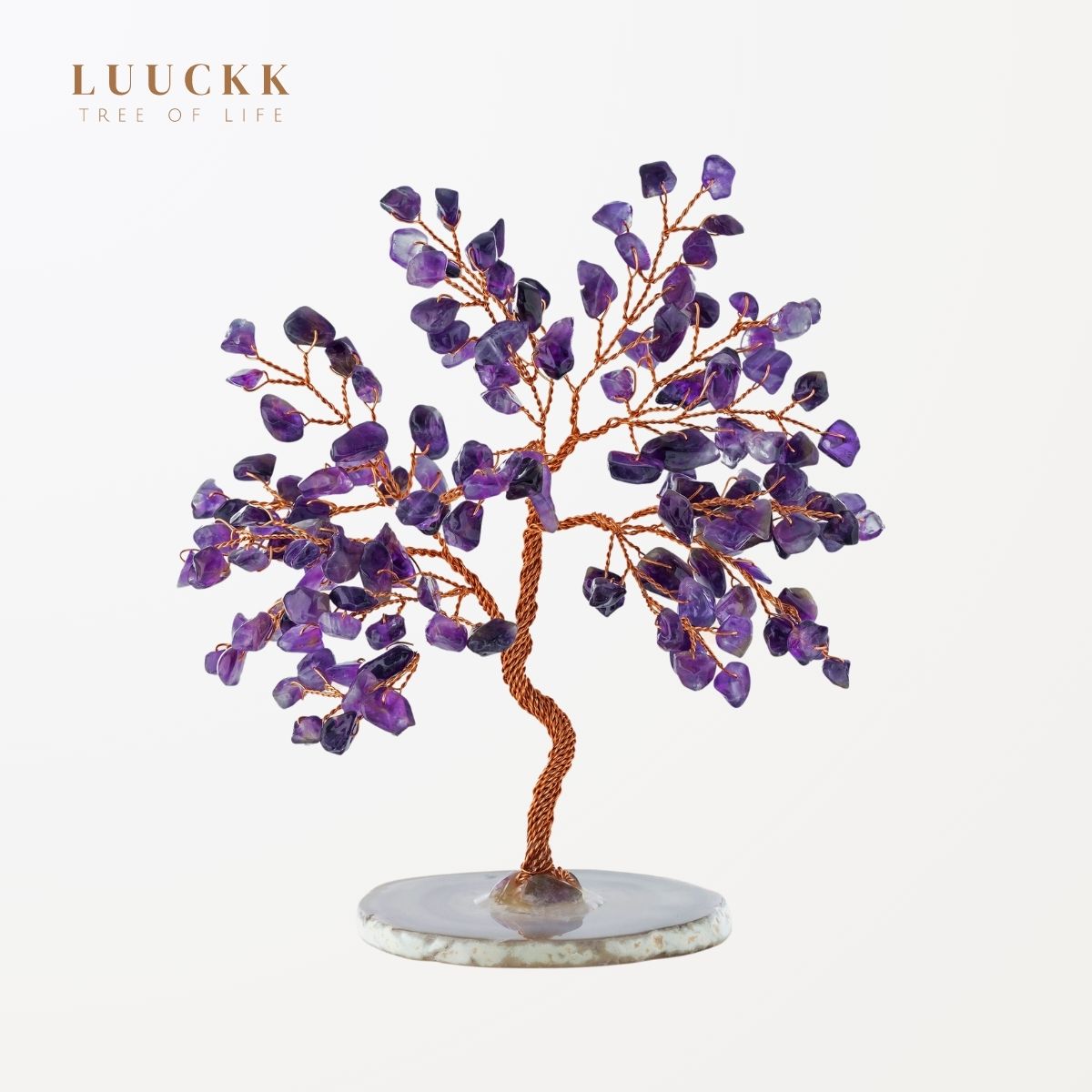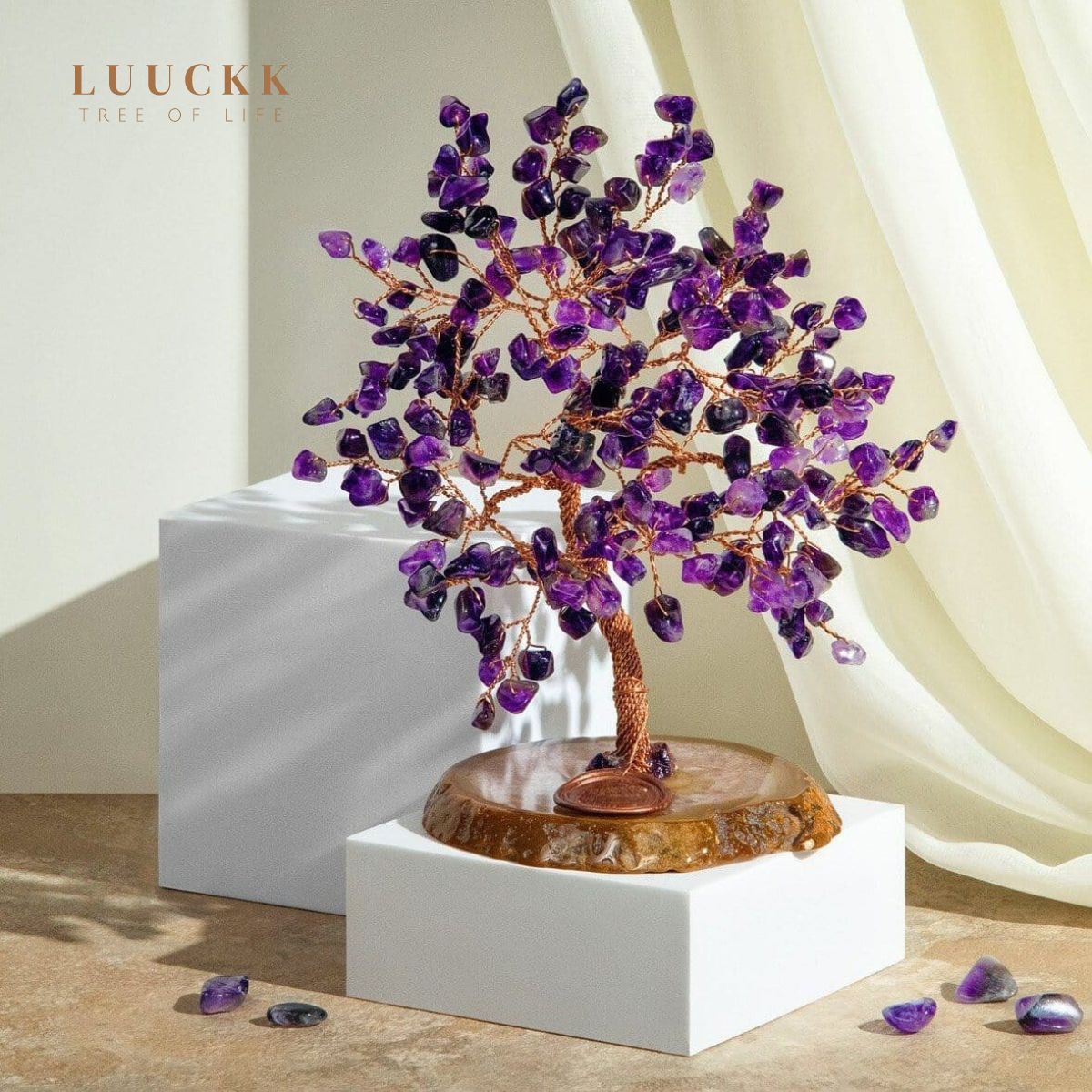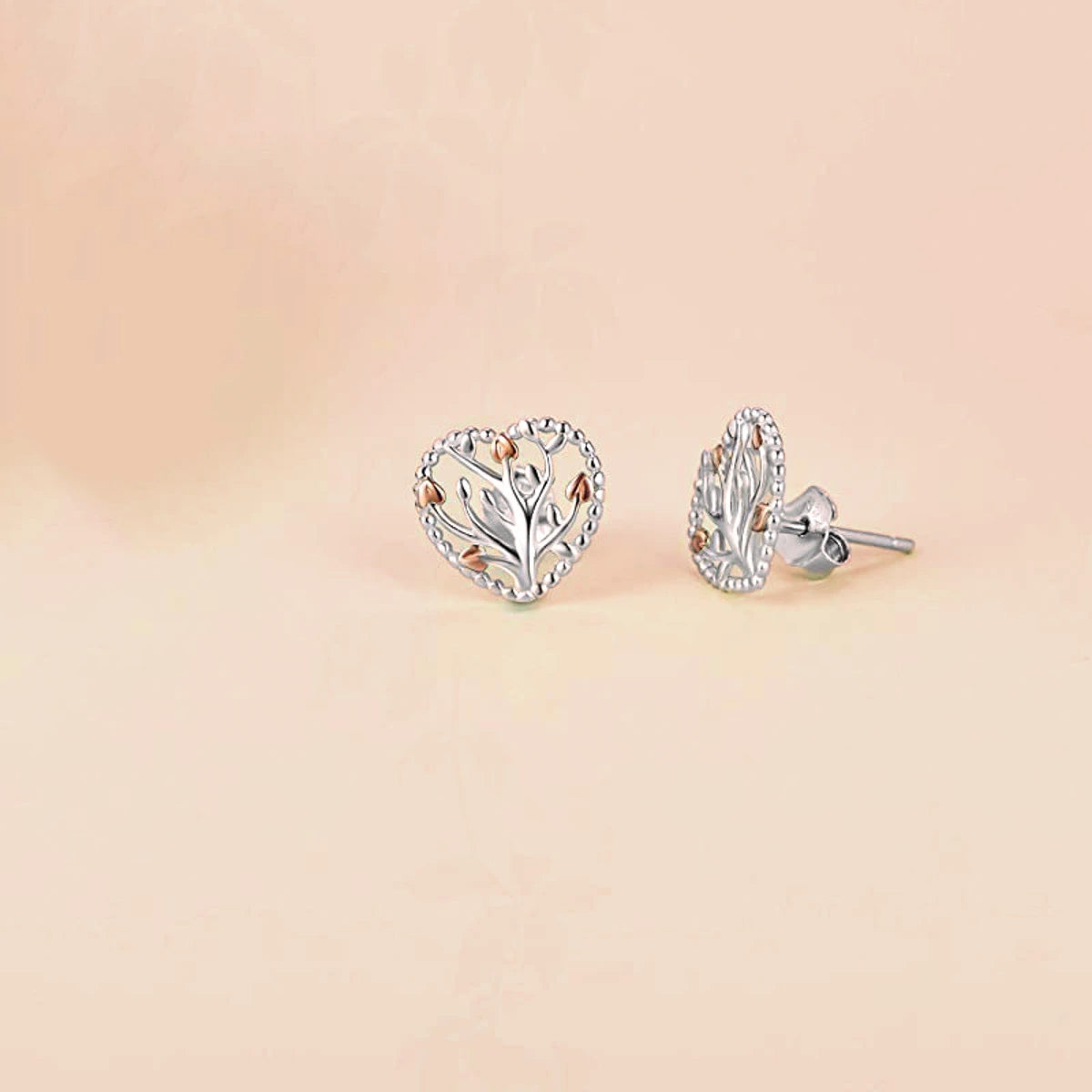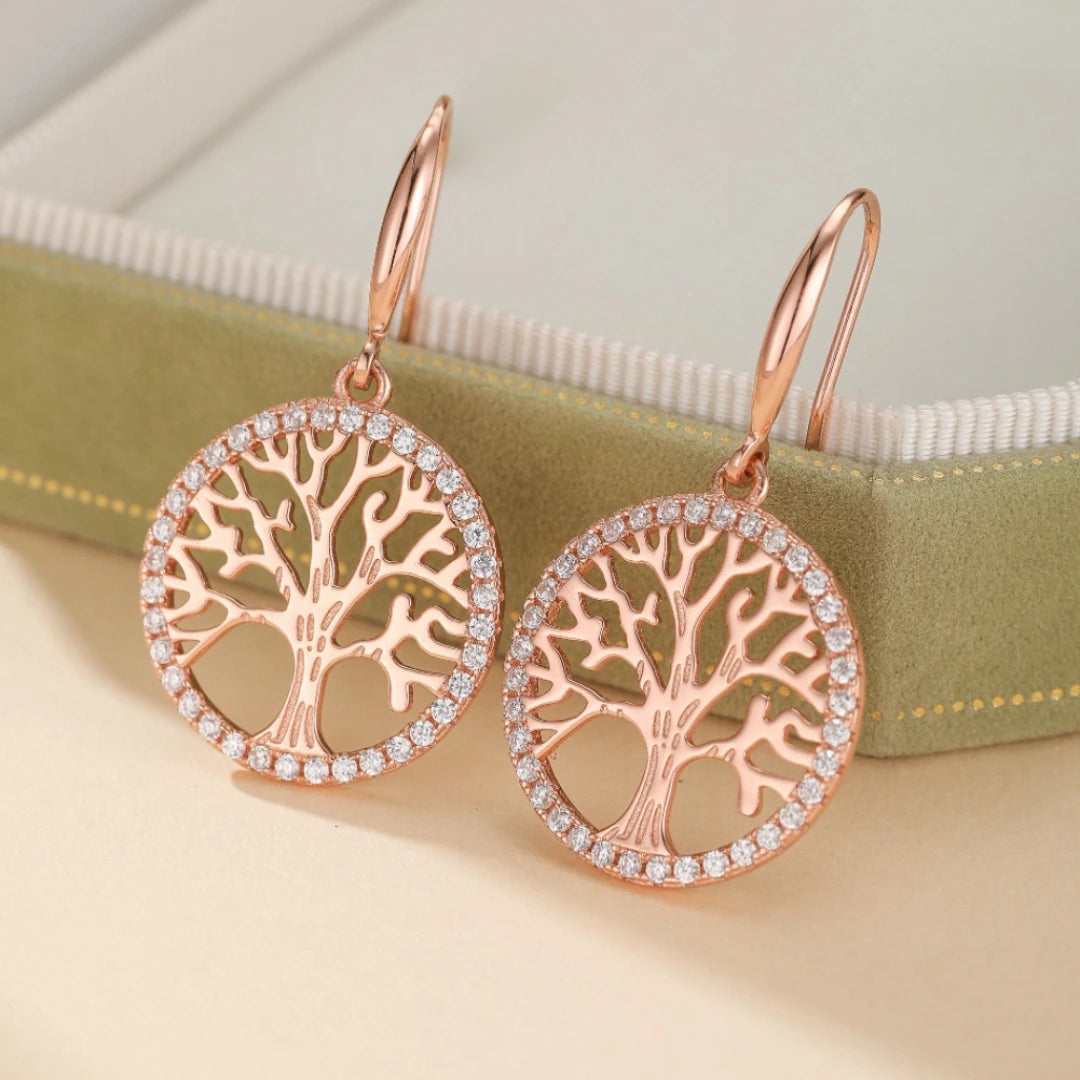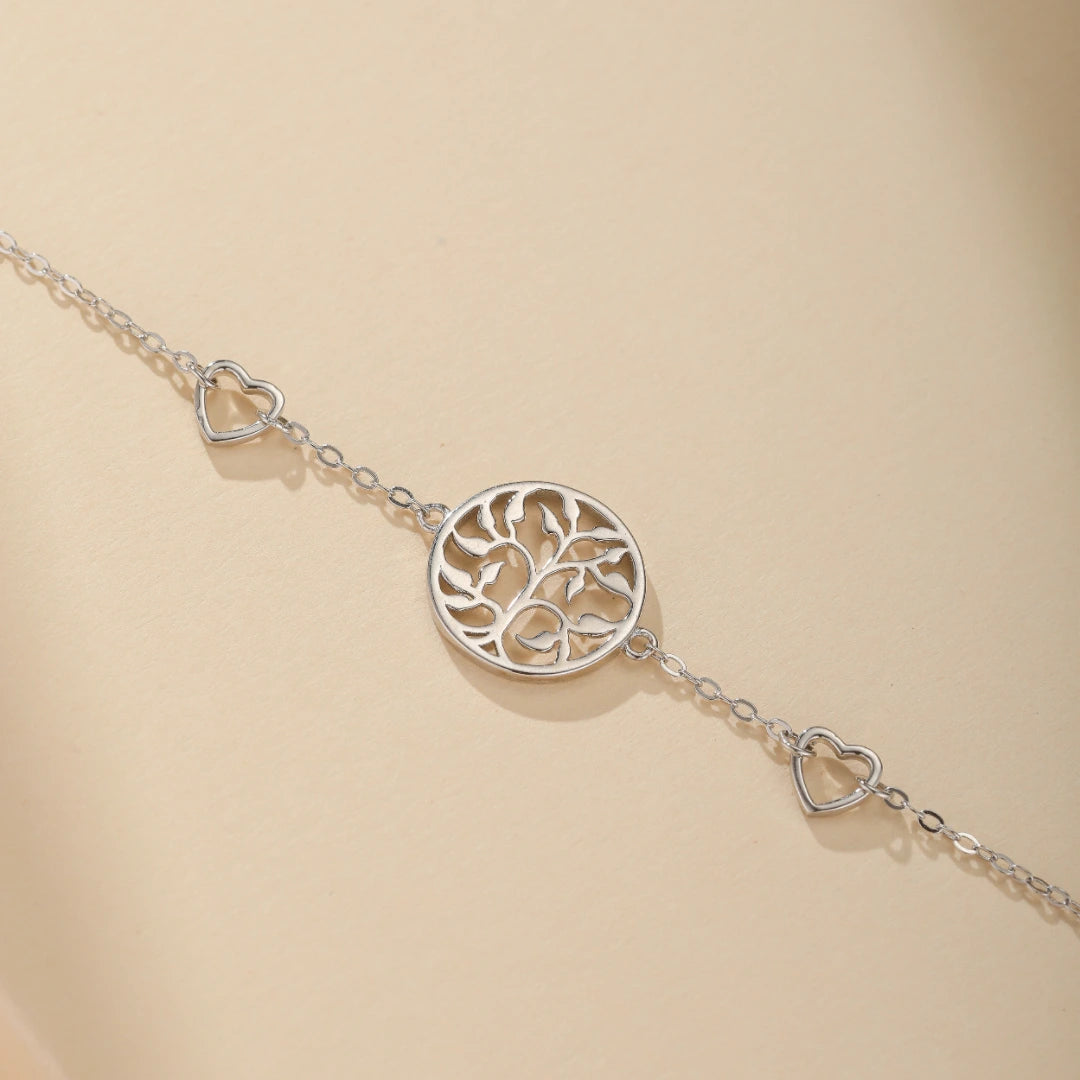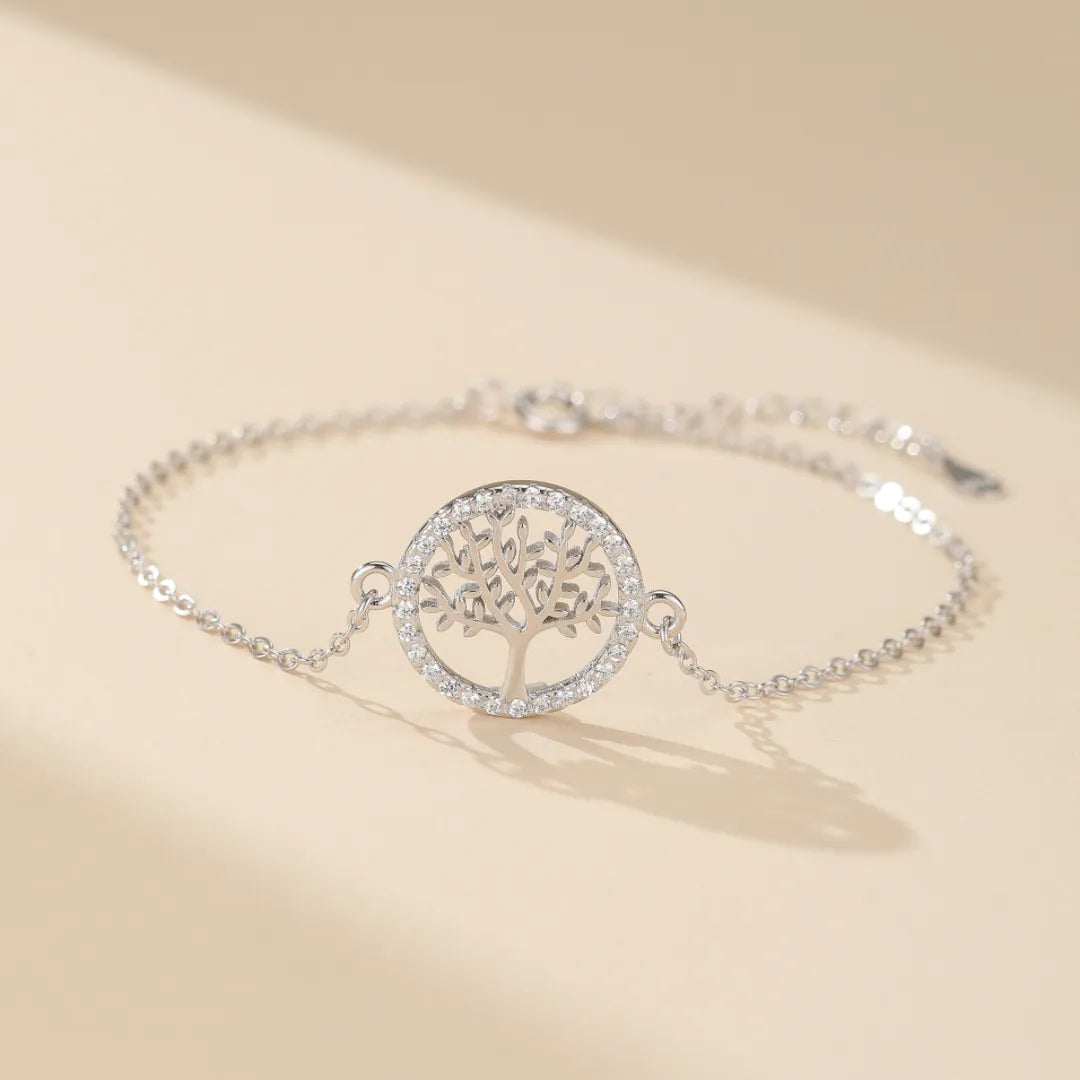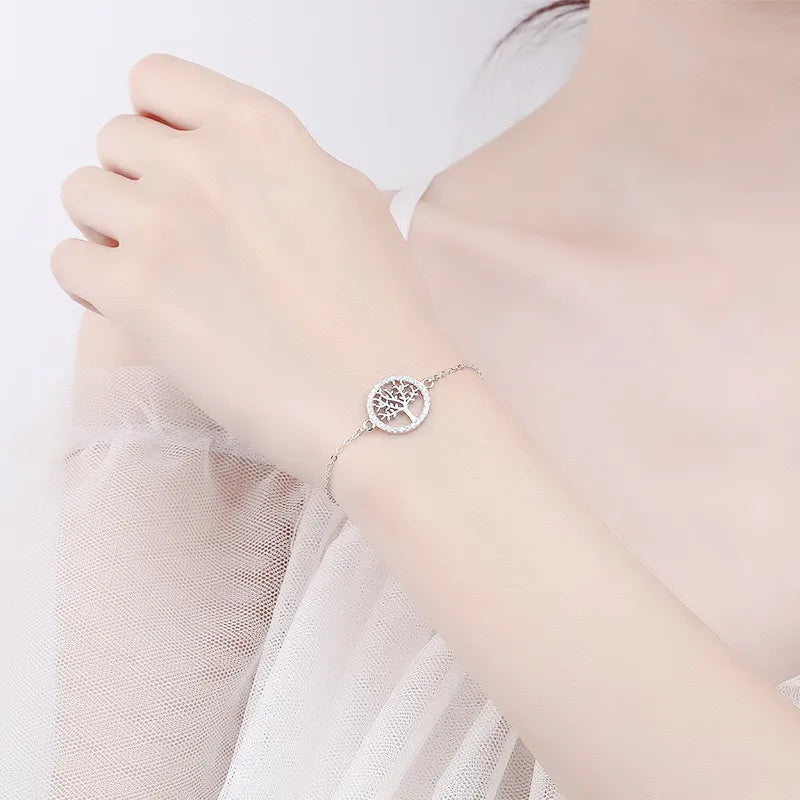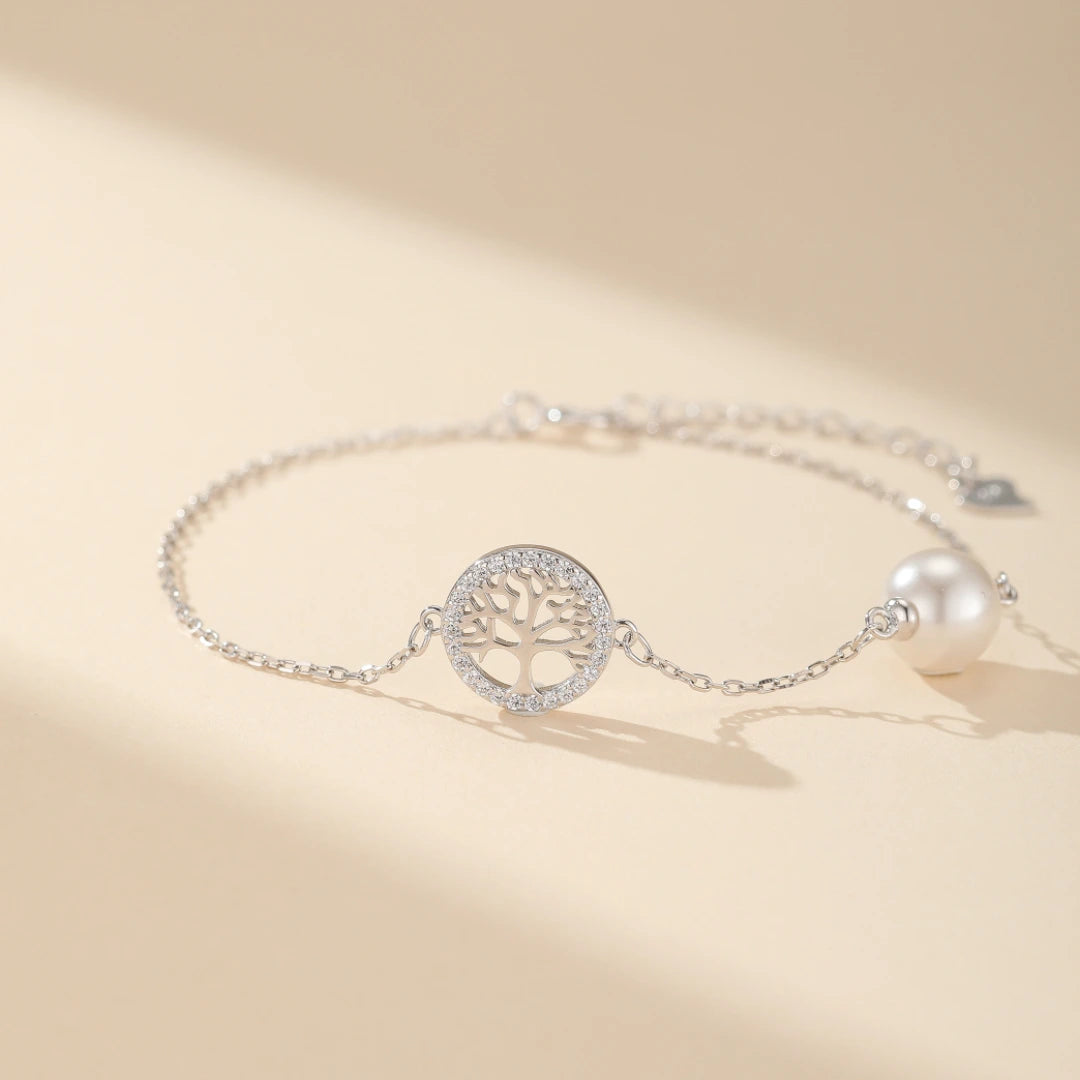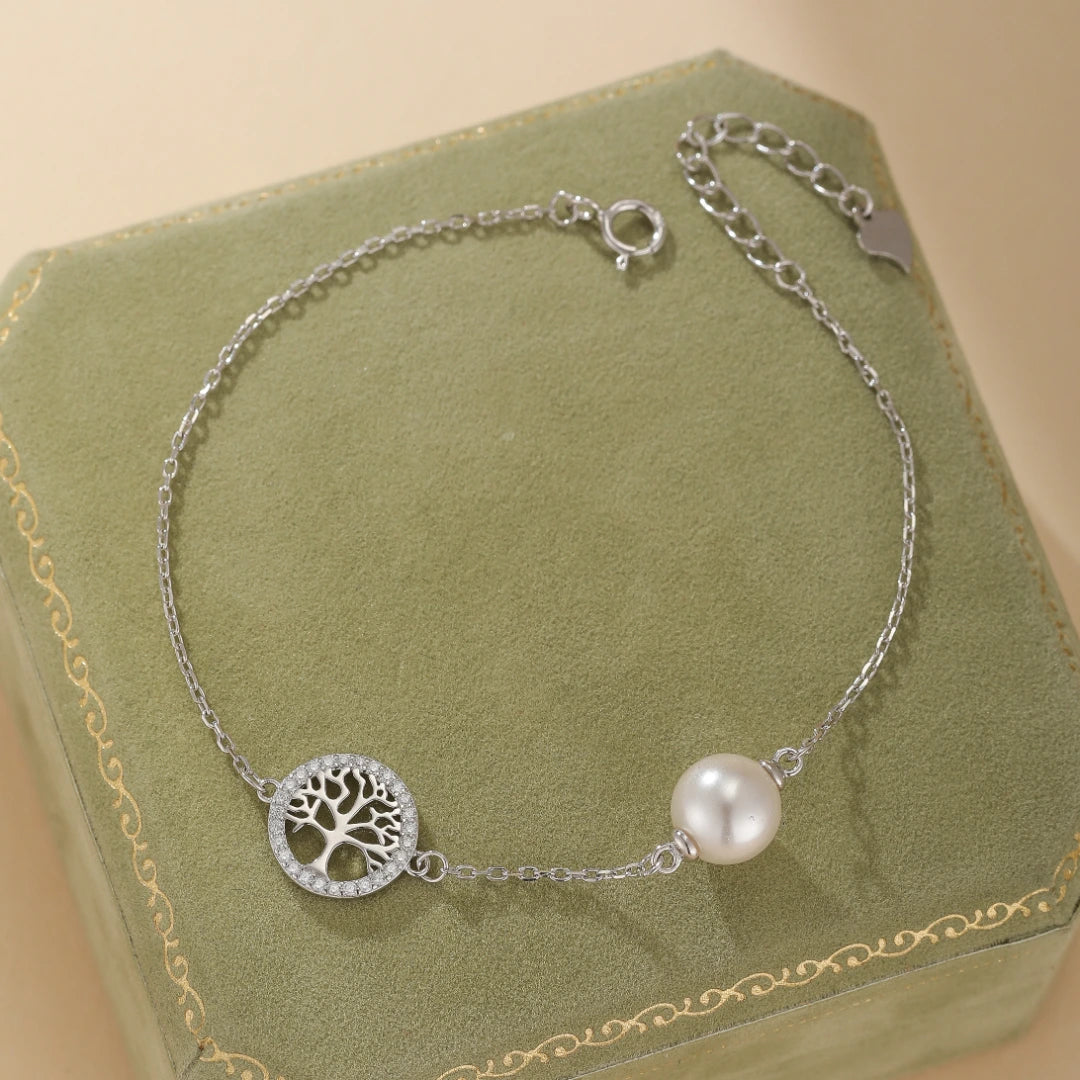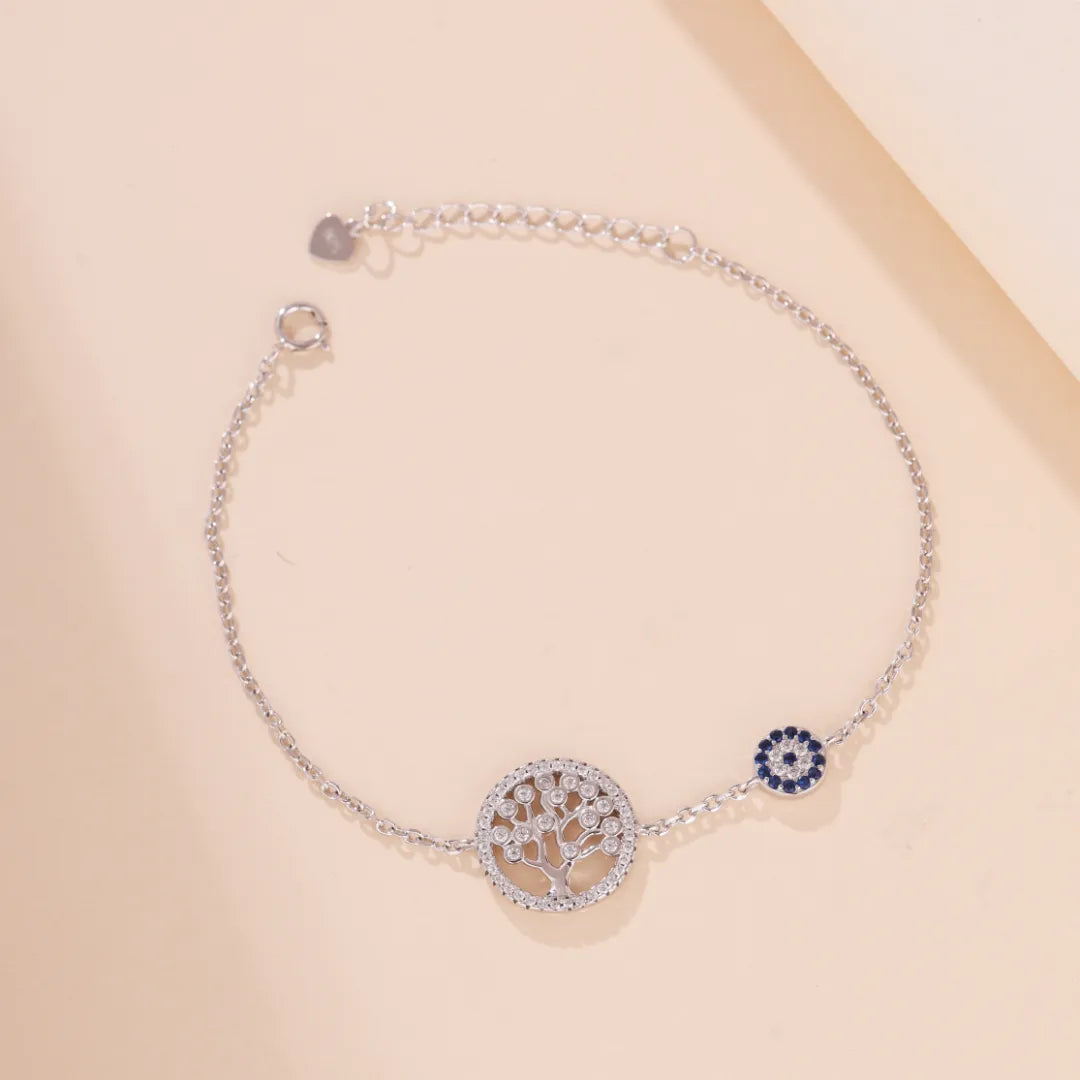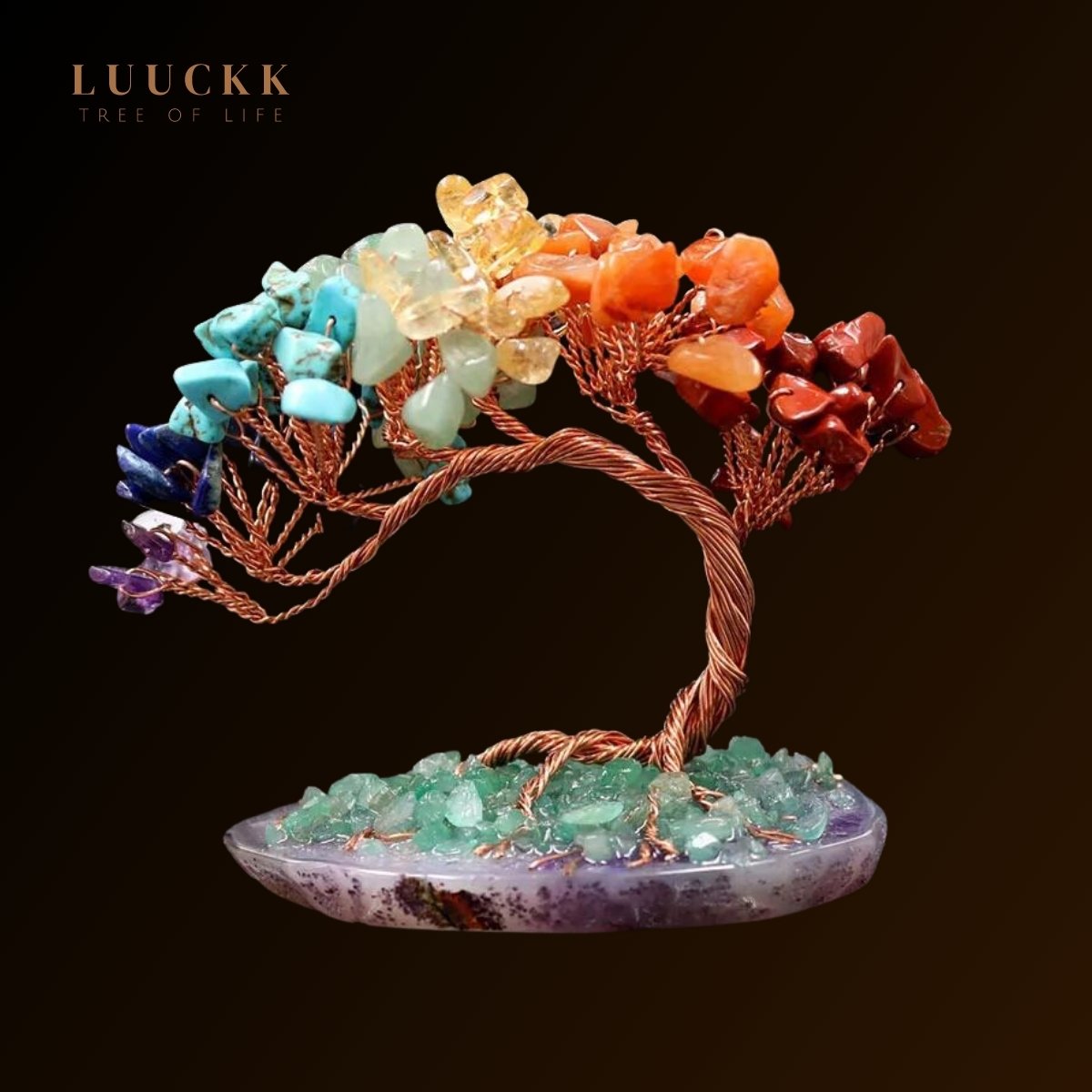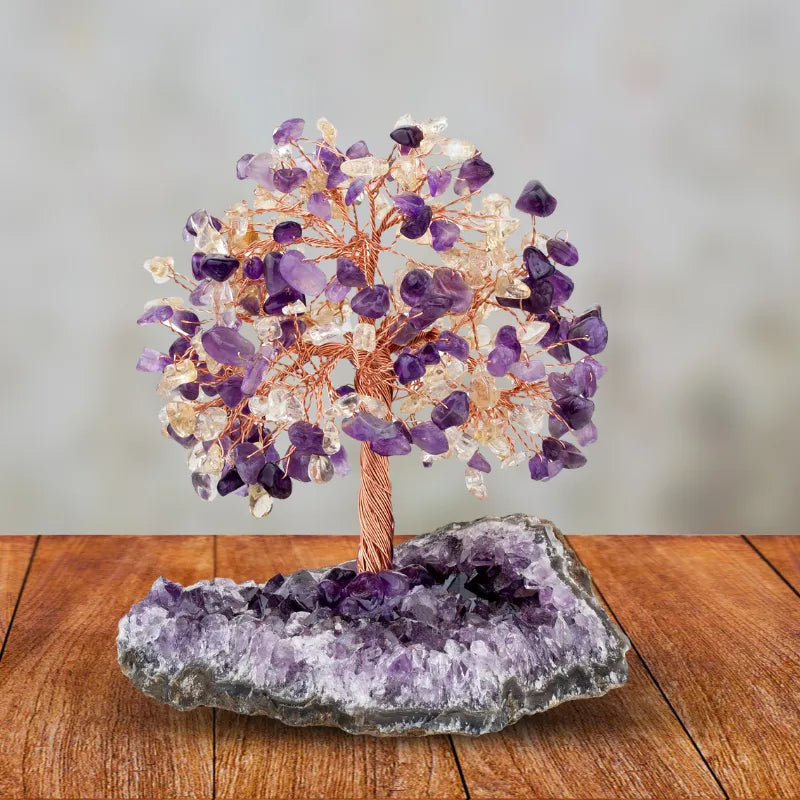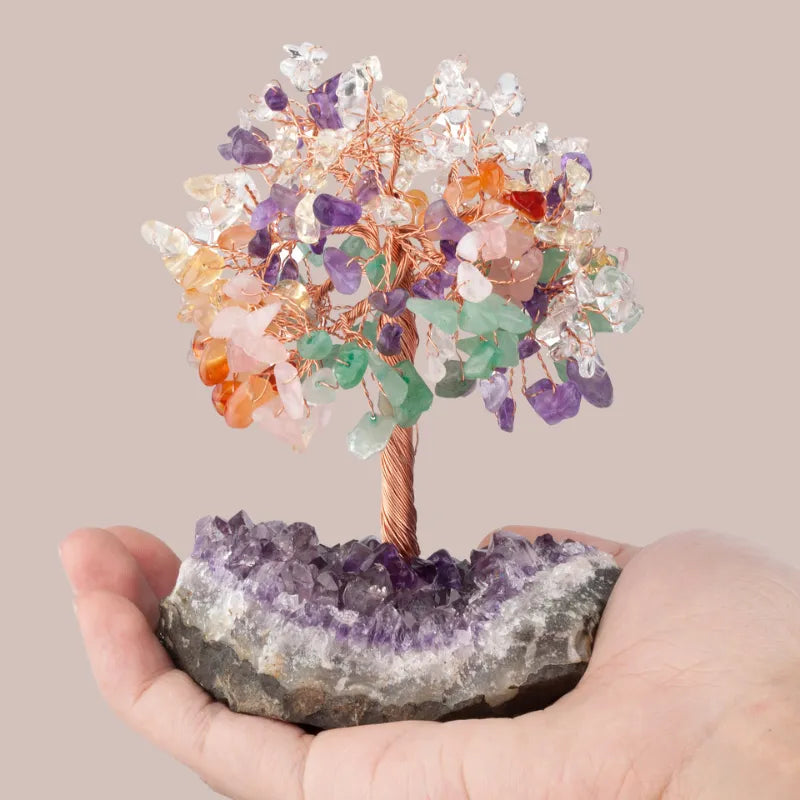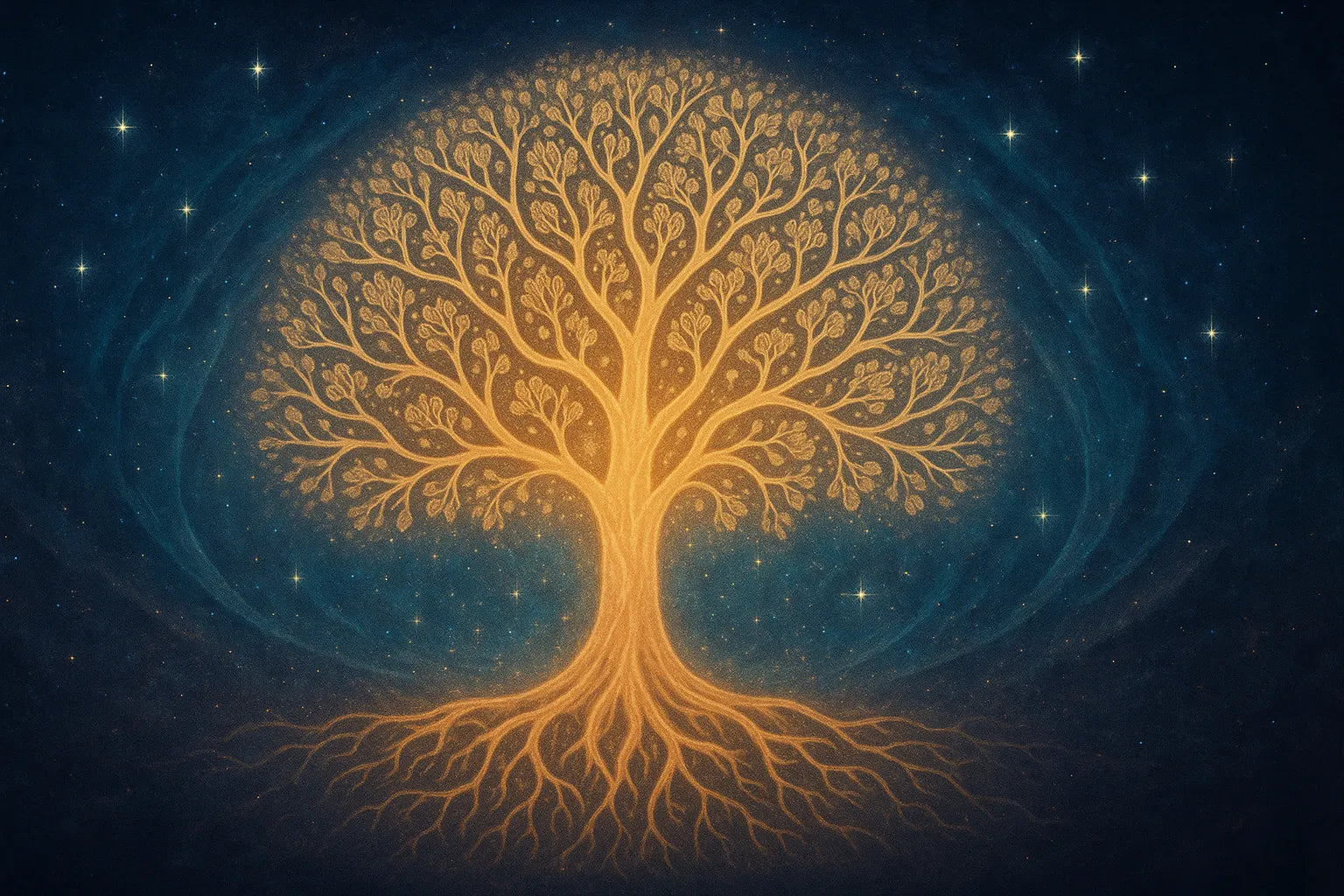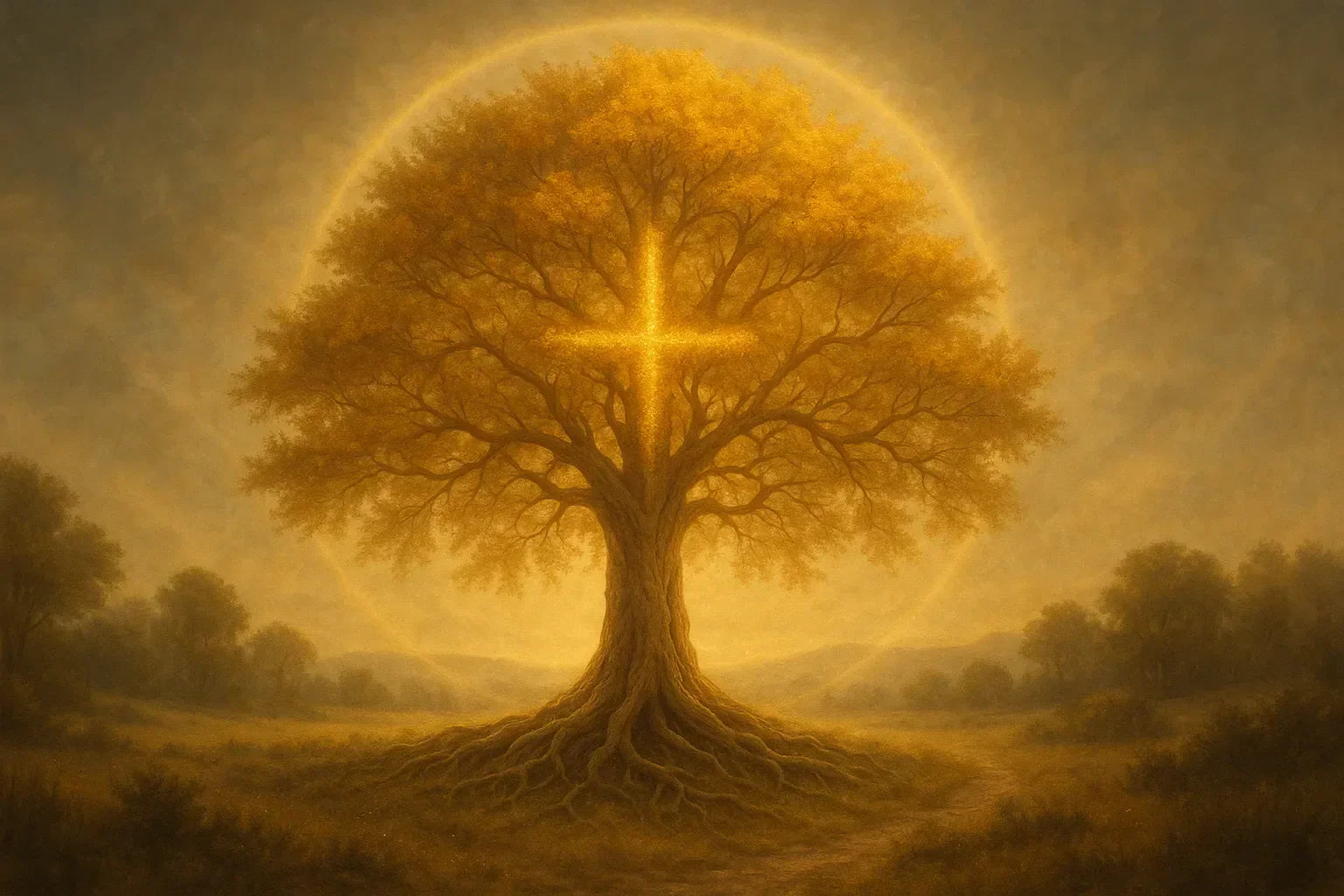Since ancient times, the Tree of Life has fascinated civilizations around the world. From spirituality to interior design, from religion to lithotherapy, this ancient symbol reappears today with renewed power in our daily lives. But behind the aesthetic of a piece of jewelry or a wall sculpture lies a universal symbol with multiple meanings.
So, what does the Tree of Life truly represent? What are its concrete benefits? Why does it continue to inspire both spiritual sages and holistic decoration enthusiasts? This article offers an in-depth exploration of its cultural, religious, philosophical, and energetic roots.
Definition and Origin of the Tree of Life: A Universal Symbolism
The Tree of Life is undoubtedly one of the oldest, richest, and most universal symbols in human history. It appears in mythologies that are geographically distant, in varied religions, as well as in philosophical systems both spiritual and scientific. Its cross-cutting presence is no coincidence: it responds to a fundamental need to represent the cycle of life, the connection between worlds, and the balance of natural forces.
A Timeless and Intercultural Archetype
Long before being a religious or esoteric symbol, the Tree of Life was what Carl Jung called a universal archetype. It embodies fundamental principles found in human psychology:
- Growth: from seed to mature tree, it symbolizes the development of the human being.
- Rooting: its roots plunged into the earth evoke our origins, our connection to the past, to family, to collective memory.
- Elevation: its branches rising toward the sky represent the aspiration for knowledge, spirituality, and transcendence.
- Resilience: it endures seasons, storms, cycles, while standing tall, like an allegory of our own journey.
In other words, the Tree of Life is a living metaphor for our human condition: rooted in reality, subject to life’s vicissitudes, yet always turned toward light and growth.
A Cosmic Symbol: World Axis and Sacred Tree
In many ancient traditions, the Tree of Life is not just a tree: it is the axis of the world, connecting heaven, earth, and the underworld. This concept, known as arborescent cosmology, sees the tree as the central pillar of the universe, around which everything is organized.
In Norse tradition, this tree is called Yggdrasil, a gigantic ash that interconnects the nine worlds of Viking mythology.
Among the shamanic peoples of Siberia or Central America, the sacred tree is considered an initiatory bridge between dimensions, enabling spirits and shamans to travel.
In Mesopotamian temples, one often finds stylized representations of a central tree surrounded by winged deities. It symbolizes both cosmic order and the fertility of the earth.
This cosmic dimension is essential: it shows that the Tree of Life is not merely a personal or domestic symbol. It is a universal model for organizing the living, a mirror between the macrocosm (the universe) and the microcosm (the individual).
The Tree as a Code for Reading Life
If the Tree of Life fascinates so much, it is also because it offers a simple yet deeply symbolic visual language to represent complex concepts:
- The roots: they embody the past, the unconscious, the foundations. They evoke genealogical memory, ancestors, the nurturing earth.
- The trunk: it symbolizes the present, the body, inner stability. It is our symbolic spine, the center from which everything radiates.
- The branches: they reach toward the future, symbolizing expansion and possibilities. They also represent our relationships, projects, and thoughts.
- The leaves and fruits: they are the visible outcomes of our growth: our talents, achievements, and lessons learned.
This reading scheme makes the Tree of Life a powerful tool for personal development. It allows one to visualize inner balance, identify imbalances (fragile roots? scattered branches?), and evolve consciously.
A Symbolism Present in the Collective Unconscious
Even without exposure to religious or philosophical texts, humans instinctively sense the symbolic power of the tree. That is why the Tree of Life is used in so many fields:
- In education, to explain growth and learning.
- In psychology, as support for narrative therapy.
- In coaching, to represent life areas to balance.
- In design, to create visuals that speak to everyone.
This symbol transcends disciplines, ages, and cultures, always keeping this central idea: the unity of life in all its forms.
The Tree in Creation Myths
Another key element for understanding the power of the Tree of Life is its constant presence in creation myths. From the biblical Genesis to the Mayan Popol Vuh, through Babylonian epics or Hindu tales, the tree always appears as a starting point or connector of worlds.
It serves various roles:
- Guardian of a divine secret (forbidden fruit or fruit of wisdom).
- Starting point for a people or humanity.
- Mediator between the human and the sacred.
This omnipresence in foundational stories grants it immediate sanctity: it is not simply a tree, but a symbolic being endowed with spiritual power.
The Tree of Life Today: Revival of an Ancient Symbol
In our modern societies, the need for meaning, a return to roots, and harmony between humans and nature brings the Tree of Life back into focus. This ancient symbol is now:
- A decorative object with energetic properties (especially when made of natural stones).
- A piece of jewelry that carries meaning and protection.
- A spiritual reference point in meditation, yoga, and energy treatments.
Its transversal dimension—simultaneously aesthetic, energetic, spiritual, and symbolic—makes it one of the few symbols capable of speaking to everyone, regardless of culture or belief.
To discover its roots in ancient beliefs, see the article Origin and Spiritual Meaning of the Tree of Life in Beliefs.

A Global Tour of Cultural Meanings of the Tree of Life
If the Tree of Life is considered a universal symbol, it is precisely because it appears, in remarkably similar ways, in the foundational myths, cosmologies, and symbolic systems of almost all ancient civilizations. Its image crosses continents, languages, and religions without losing its evocative power.
In this section, we embark on a symbolic journey around the globe to discover what the Tree of Life means in different cultures. This overview helps us understand why this symbol still resonates so strongly with us today, even subconsciously.
Ancient Egypt: The Ished Tree and the Promise of Eternity
In pharaonic Egypt, the sacred tree called Ished stood in the heavenly gardens of Helipolis, the City of the Sun. It bore fruits of immortality, and the gods inscribed the names of just rulers on its trunk, guaranteeing them eternal life in the afterlife.
- It was closely tied to solar cycles and the god Thoth, guardian of wisdom.
- It also appeared in funerary rituals as a symbol of rebirth and the transition from earthly life to the divine.
The Egyptian conception of the Tree of Life perfectly illustrates the idea of a tree guarding destiny, linked to time, memory, and the renewal of life.
Sumerian and Babylonian Civilizations: The Sacred Palm
In ancient Mesopotamian reliefs, the Tree of Life often appears as a stylized palm framed by divine or royal figures. This tree symbolizes fertility, cosmic structure, and divine sovereignty.
- Its roots delve into the underworld waters (Abzu), while its crown reaches the heavens.
- It represents universal order, safeguarded by winged Apkallu.
- The Mesopotamian tree is not passive: it is a living structure that organizes the world, a model of cosmic stability.
India and Hindu Traditions: Kalpavriksha, the Wish-Granting Tree
In Hinduism, the Kalpavriksha is a celestial tree that grants wishes. It is mentioned in the Vedic texts as one of the cosmic treasures that emerged during the churning of the ocean of milk by the gods.
- It is associated with abundance, fertility, and divine knowledge.
- It connects gods and humans, offering the fruits of spiritual desires.
Ancient China and Taoism: The Longevity Tree
In Chinese tradition, the Tree of Life appears in Taoist tales of immortality. It grows on the mythical island of Penglai, home of the Immortals.
- The peaches of longevity it bears every 3,000 years grant eternal life.
- It is often accompanied by symbolic animals like the crane or the phoenix, representing spiritual elevation.
Celtic Traditions: Crann Bethadh, the Druid’s Sacred Tree
The Celts held trees in such high regard that each tribe had its sacred tree—Crann Bethadh—planted at its center.
- It represented the balance of nature’s forces and the bond between humans and gods.
- When an enemy felled a clan’s sacred tree, it was seen as a declaration of spiritual war.
Norse World: Yggdrasil, the Cosmic Tree
In Norse mythology, Yggdrasil is the quintessential world tree—a vast ash that supports the nine realms of the Norse cosmos: Asgard, Midgard, Helheim, and more.
- Its roots reach sacred wells like Mímisbrunnr, the source of wisdom.
- It is constantly threatened by a dragon, a stag, and a squirrel, symbolizing the fragility of cosmic order.

Pre-Columbian America: The Ceiba, Mayan Sacred Tree
For the Maya, the sacred tree is the Ceiba, a large tropical tree often planted at the center of cities or temples.
- It symbolized the cosmic axis connecting the underworld (Xibalba), the world of the living, and the sky.
- It was depicted as a four-branched cross on stelae or codices.
- Shamans used it as a portal to travel between worlds through rituals or trance.
West Africa: The Baobab, Tree of Life and Death
In many African cultures, the baobab is considered the Tree of Life. It provides water, food, shelter, and medicine, and also serves as an ancestral shrine and sometimes a burial site.
- It represents the continuity of generations.
- Its hollow trunk often houses protective spirits or ritual objects.
Islamic World and Sufism: The Tree of Light
As mentioned earlier, the tree in Islam is evoked symbolically. In Sufism, a mystical branch of Islam, the tree is often associated with divine light and inner elevation.
- It symbolizes the soul’s journey: roots (Islam), trunk (Sharia), branches (Ma’rifa), fruits (spiritual virtues).
- Some Sufi texts speak of the Tree of Light, nourished by prayer and purity of heart.
Indigenous Peoples: Trees as Guardian Spirits
In indigenous traditions (Native Americans, Australian Aborigines, Siberian peoples), each tree can be a spirit, a consciousness, a guide.
There isn’t a single Tree of Life but a forest of living spirits, each tied to a clan, a legend, or a natural entity.
Trees are consulted, thanked, honored, and their felling requires forgiveness rituals.
Summary: A Universal Symbol, Multiple Expressions
This global tour reveals one essential truth: the concept of the Tree of Life transcends cultures, yet it incarnates differently according to the needs, environments, and beliefs of each people.
Sometimes a cosmic pillar, sometimes guardian of the dead, sometimes a source of immortality or a revealer of wisdom, the Tree of Life adapts while maintaining a common essence: connecting dimensions, unifying opposites, and conveying vital energy.
To delve into each interpretation and journey further into the history of civilizations, we invite you to read Meaning of the Tree of Life in Different Cultures.
The Tree of Life in Christianity: A Tree of Reconciliation and Eternity
In the Bible, the Tree of Life appears in the first chapters of Genesis, in the Garden of Eden. It is often confused with the Tree of Knowledge of Good and Evil but is distinct.
The Tree of Life grants eternal life. After Adam and Eve’s transgression, God forbids them from accessing it, to prevent humans from becoming immortal.
In medieval Christianity, Christ is often depicted as the new Tree of Life: His cross becomes the tree that restores eternal life through redemption. In Christian art, one finds crucifixes shaped like trees, with blossoming branches symbolizing resurrection.
To explore this spiritual theme further, see Meaning of the Tree of Life in Christianity.

The Tree of Life in Islam: An Eternal Symbol of Knowledge and Spirituality
In the Quran, the tree mentioned is the "shajarat al-khuld," the Tree of Eternity. Like in the Bible, it features in the Adam and Eve story but takes on a different symbolic dimension.
Muslim mystics, especially Sufis, saw the Tree of Life as the very structure of the human being, a path to God. The roots are faith, the trunk is divine law (Sharia), the branches are knowledge (Ma’rifa), and the fruits are spiritual virtues.
In Islamic art, the tree is often stylized to respect the ban on figurative imagery but always retains strong spiritual significance.
Read more: What Does the Tree of Life Mean in Islam?
Feng Shui and the Tree of Life: Channeling Vital Energy
Feng Shui, the ancient Chinese art of harmonizing spaces, is based on the idea that energy (Chi) flows everywhere—in objects, places, and living beings—and influences our well-being, relationships, and destiny. In this system, the Tree of Life naturally finds its place. A symbol of growth, balance, and connection among elements, it becomes a powerful activator of positive energies, both spiritual and material.
But how is the Tree of Life truly integrated into Feng Shui philosophy? And how can it be used at home to boost vital energy and create an environment conducive to serenity, prosperity, or healing?
Feng Shui Symbolism of the Tree of Life
In Feng Shui, every decorative element carries a vibration and information that influence inhabitants. The Tree of Life symbolizes harmony among the five elements (wood, fire, earth, metal, and water):
- Wood (represented by the tree itself) embodies growth, health, and projects.
- Fire is suggested by the tree’s flowers, fruits, or vitality.
- Earth is represented by the roots, stability, and grounding.
- Metal (often in the decorative structure) stands for order, structure, and precision.
- Water, the nourishing energy fluid, is symbolized by the pendant’s circular shape or stones like amethyst and quartz.
Benefits of the Tree of Life in Feng Shui
Here are the main effects sought when incorporating a Tree of Life in Feng Shui:
- Balancing the energy of a too-empty or too-cluttered space.
- Stimulating vitality and health in wellness areas (bedroom, kitchen, relaxation space).
- Enhancing grounding and concentration, especially in workspaces.
- Attracting prosperity and growth in personal or professional sectors.
- Strengthening spirituality and inner peace when placed in a meditation area or personal altar.
Depending on the color, material, and natural stones used, you can emphasize certain energetic intentions.
Where to Place a Tree of Life in Feng Shui
In traditional Feng Shui, spaces are divided according to the Bagua map, which associates each area with a life domain (career, health, love, abundance, etc.). Here are some tips to optimize your Tree of Life’s effect:
- East (health, family): a wooden tree or one with green stones (aventurine, jade) will enhance vitality, family harmony, and emotional support.
- Southeast (wealth, abundance): choose a tree with prosperity stones (citrine, pyrite) to attract financial success.
- North (career): a tree with dark stones (onyx, black obsidian, tiger’s eye) strengthens mental clarity and determination.
- Southwest (love, relationships): a decorative tree in rose quartz or rhodonite boosts love, tenderness, and emotional harmony.
- Office or study area: a tree with lapis lazuli or fluorite aids concentration and intuition.
Decor tip: avoid placing a Tree of Life in bathrooms or toilets, where energy is often unstable and dissipative.
Tree of Life and Natural Stones: An Energetic Synergy
The combination of Feng Shui and lithotherapy is increasingly popular, especially through natural stone Trees of Life, which are highly valued in décor.
Each stone adds its own energetic frequency to the tree, allowing for a highly personalized object:
- Amethyst: mental calm, spiritual growth.
- Green aventurine: self-confidence, heart opening.
- Citrine: solar energy, prosperity, joy of life.
- Rose quartz: love, tenderness, emotional healing.
- Larimar: energetic protection, intuition.
- Tiger’s eye: strength, courage, balance.
Choosing a Tree of Life based on the stones that match your current needs is an excellent way to personalize your space while benefiting from their subtle energy.
How to Choose Your Feng Shui Tree of Life
For the Tree of Life to fully play its energetic role, it is essential to:
- Select it with intention, according to what you wish to manifest in your life.
- Favor natural materials: wood, stones, metal, rather than synthetic objects devoid of energy.
- Place it carefully in a visible, clean, well-ventilated spot where energy can circulate freely.
A Tree of Life covered in dust or hidden behind a closed door will lose much of its symbolic effectiveness.
Tip: regularly purify your Tree of Life with sage, incense, or a clear intention to reactivate its vibrational potential.
In Summary
When integrated into a Feng Shui approach, the Tree of Life becomes much more than a decorative object. It becomes an energetic ally, a symbolic anchor that supports our inner balance and positively influences a space’s atmosphere. By playing with material, color, placement, and intention, you can transform a simple decorative tree into a genuine tool for personal growth.
To explore this practice further, see the article Tree of Life and Feng Shui: Meaning, Use, and Customs.

The Tree of Life in Religions: A Common Thread of Spirituality
What makes the Tree of Life so unique is that it transcends religions and appears in nearly all of them.
Judaism and Kabbalah
Jewish Kabbalah developed a highly structured version of the symbol through the Etz Ha’Chaim, or “Tree of Life.” It is composed of ten sefirot, representing different aspects of God and human consciousness. It forms a true initiatory path used for meditation and understanding the universe.
Buddhism
The tree under which the Buddha attained enlightenment is the Bodhi tree (Ficus religiosa). It embodies spiritual awakening, inner peace, and detachment from the ego.
Find a synthesis of these visions in The Tree of Life in Religions: Symbols and Interpretations.
Concrete Benefits of the Tree of Life in Modern Life
The return to ancient symbols in our contemporary lifestyles is a deep trend. In an era when more people seek meaning, alignment, inner harmony, and reconnection with nature, the Tree of Life becomes a powerful reference, both energetics-wise and philosophically. It takes many forms: jewelry, decor objects, meditative practices, or personal growth tools.
In this section, let’s explore the concrete benefits of the Tree of Life in our modern daily lives.
A Symbol of Grounding in a Turbulent World
In a fast-paced world crowded with information and often disconnected from core values, the Tree of Life serves as a symbolic reminder of what truly matters. It recenters us.
- Its roots signify stability, origin, and family/spiritual memory.
- Its trunk symbolizes our inner structure and personal alignment.
- Its branches represent openness, aspirations, and our connections with others and the world.
Wearing a Tree of Life as jewelry, having it in your home decor, or in your workspace offers a visual and symbolic anchor to stay grounded while continuing to evolve.
In Lithotherapy: An Energetic Conduit
When combined with natural stones, the Tree of Life symbol acts as an energy amplifier. It structures, directs, and balances the vibrations of the minerals used. That is why Tree of Life jewelry made with natural stones is so popular.
Here are some beneficial associations:
- Tree of Life + Amethyst: to calm the mind, enhance intuition and deep sleep.
- Tree of Life + Rose Quartz: to nourish self-love, harmonious relationships, and heal emotional wounds.
- Tree of Life + Tiger’s Eye: to strengthen confidence, willpower, and protection against negative energies.
- Tree of Life + Citrine: to attract abundance, joy, and reinforce inner solar energy.
- Tree of Life + Labradorite: to shield from external influences, especially for highly sensitive individuals or therapists.
In Décor: Harmonizing Spaces and Creating a Relaxing Atmosphere
The Tree of Life is also a striking decorative element at home. Its presence fosters a zen, balanced, and vibrant ambiance. When used in living spaces, it helps:
- Smooth energy flow (Feng Shui principle).
- Create a focal point inviting relaxation and contemplation.
- Bring natural vibration into overly artificial or cluttered environments.
Some usage ideas:
- A metal or wooden Tree of Life wall piece in the living room or entryway.
- A natural stone tree on a shelf or personal altar.
- A stylized Tree of Life artwork in a meditation or reading nook.
In Personal Growth: A Symbolic Growth Tool
The Tree of Life symbol is widely used in coaching, therapy, journaling, and meditation contexts. Why? Because it provides a rich symbolic framework to map personal evolution:
- The roots: our origins, values, wounds, hidden resources.
- The trunk: our current identity and stance in the world.
- The branches: our projects, goals, and aspirations.
- The fruits: our achievements, insights, and learning.
- The leaves: our ideas, thoughts, and social connections.
This framework is often employed in:
- Personal development workshops: to explore one’s life vision.
- Guided meditation: to reconnect with different life dimensions.
- Intuitive journaling: to map emotions, projects, and memories.
In Spirituality: A Symbol of Higher Connection
For many on a spiritual path, the Tree of Life serves as a symbolic portal between different levels of consciousness. It helps:
- Meditate on life’s unity: everything is connected, every living being is part of the same cosmic tree.
- Elevate consciousness: climbing the tree’s branches mentally leads to spiritual growth.
- Tap into ancient wisdom: connecting with the tree archetype accesses collective memory.
In modern esoteric traditions (Wicca, energy work, contemporary shamanism), the Tree of Life is used for spiritual journeys, rituals, or chakra alignment.
In Fashion and Lifestyle: A Symbolic Aesthetic
The popularity of the Tree of Life motif in fashion isn’t just aesthetic. It addresses a deep symbolic expectation. Wearing a Tree of Life pendant or ring declares:
- Anchoring to fundamental values (nature, simplicity, spirituality).
- Commitment to personal growth.
- Connection to something greater than oneself.
This visual and energetic statement transcends jewelry. That is why:
- The motif appears not only on jewelry but also on bags, clothing, notebooks, and tattoos.
- It appeals equally to spirituality seekers and lovers of natural, meaningful beauty.
In Summary
The Tree of Life is not merely a symbolic relic of the past. It is a living, transformative tool rooted in our contemporary world. It accompanies us daily—in our spaces, on our bodies, in our thoughts, and intentions.
Whether to harmonize a place, support a transformation phase, enhance a meditation practice, or affirm a spiritual identity, the Tree of Life offers a comforting and inspiring framework.
Its versatility—esthetic, energetic, symbolic, and emotional—makes it a true ally in personal development and well-being in the 21st century.
The Tree of Life in Decoration: Energy, Elegance, and Meaning
In interior design, the Tree of Life captivates with its harmonious presence, strong symbolism, and natural aesthetic. It is increasingly used in zen, bohemian, and Scandinavian interiors.
Why incorporate it in decor?
- Creates a relaxing atmosphere.
- Promotes the circulation of positive energy.
- Serves as daily inspiration.
You can integrate it in various forms:
- Wall art in metal or wood.
- Natural stone trees (amethyst, quartz, aventurine...).
- Handcrafted sculptures for altars or meditation corners.
To explore all the ways to integrate this symbol at home, see the Complete Guide to the Tree of Life: Origin, Meaning, Use in Decoration and Jewellery.
Why Wear Tree of Life Jewelry?
Tree of Life jewelry is more than an aesthetic accessory. It acts as a personal talisman carrying intention.
It can symbolize:
- The memory of a loved one.
- The quest for life balance.
- Grounding during times of change.
Moreover, when paired with a specific natural stone, it becomes a powerful energetic tool:
- Labradorite: protection and intuition.
- Carnelian: courage and dynamism.
- Lapis lazuli: communication and wisdom.
Tips for Choosing a Tree of Life That Suits Your Needs
In Jewelry
- Choose a handcrafted model to benefit from the creator’s energy.
- Select a stone aligned with your current intention.
- Consider size and material based on your style and feeling.
In Decoration
- Wood: warmth, natural feel, relaxation.
- Metal: strength, structure, grounding.
- Natural stones: energy, healing, spirituality.
Conclusion: The Tree of Life, An Ancestral Compass for the Modern World
The Tree of Life is more than a symbol. It is an inner map, an ancestral compass, a bridge between the visible and the invisible. In a world seeking meaning, balance, and peace, it reminds us of one essential truth: life is a cycle, a growth, a rooting... but also an opening toward light.
It is this richness—both simple and infinitely complex—that makes the Tree of Life a precious ally in spirituality, decoration, or personal development.
Want to discover your ideal Tree of Life?
Visit our store and explore our unique collection of jewelry, decorative trees, and energetic creations inspired by this millennia-old symbol.
👉 Discover the Tree of Life Collection
To Read:
-
Origin and Spiritual Meaning of the Tree of Life in Beliefs
-
Meaning of the Tree of Life in Different Cultures
- Meaning of the Tree of Life in Christianity
- What Does the Tree of Life Mean in Islam?
- Tree of Life and Feng Shui: Meaning, Use, and Customs
-
Complete Guide to the Tree of Life: Origin, Meaning, Use in Decoration and Jewellery
FAQ – Everything About the Tree of Life
-
What is the Tree of Life?
The Tree of Life is a universal symbol representing the connection between earth and sky, growth, wisdom, grounding, and spirituality. -
What is its spiritual significance?
Spiritually, it symbolizes the cycle of life, the unity of all things, and the bond between humans, nature, and the divine. -
In which cultures is it found?
It appears in many cultures: Egyptian, Celtic, Norse, Mayan, Hindu, Chinese, African, as well as in major monotheistic religions. -
What are the benefits of the Tree of Life?
It fosters grounding, protection, personal growth, emotional balance, and inner harmony, especially when paired with natural stones. -
Why wear Tree of Life jewelry?
To benefit from its symbolic and energetic virtues: protection, balance, inner peace, and to maintain a constant reminder of personal intentions. -
Where should you place a Tree of Life?
According to Feng Shui: in the entrance, living room, or office depending on intention (harmony, abundance, focus…). Avoid humid or closed spaces. -
What does it mean in Islam?
It is mentioned in the Quran as the Tree of Eternity (Shajarat al-Khuld) and symbolizes spiritual pursuit, divine light, and inner wisdom. -
Does it have a use in lithotherapy?
Yes. Combined with natural stones, it acts as a vibrational amplifier, harmonizing energies and enhancing mineral properties. -
Can it be given as a gift?
Absolutely. It represents goodwill, protection, and evolution, making it ideal for birthdays, births, or new life phases. -
How to choose the right Tree of Life?
Choose based on use (jewelry or decor), materials (wood, metal, stones), colors, and stones matching your intentions (love, strength, clarity…).
